Articles tagged oidc
Secure Your Express App with OAuth 2.0, OIDC, and PKCE
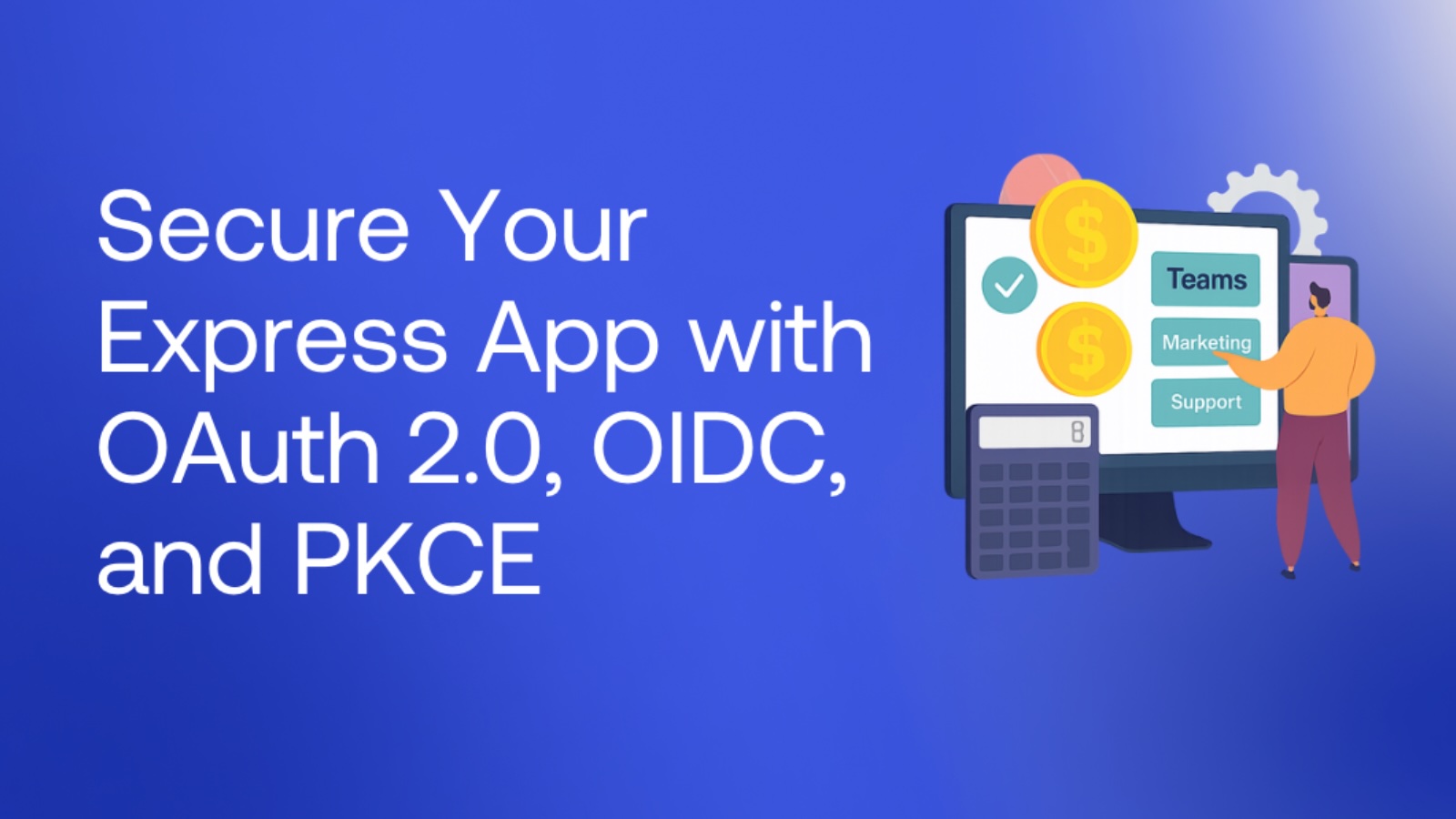
Every web application needs authentication, but building it yourself is risky and time-consuming. Instead of starting from scratch, you can integrate Okta to manage user identity and pair Passport with the openid-client library in Express to simplify and secure the login flow. In this tutorial, you’ll build a secure, role-based expense dashboard where users can view their expenses tailored to their team. Check out the complete source code on GitHub and get started without setting...
How to Instantly Sign a User Out across All Your Apps

Your enterprise customers expect you to safeguard them from common security incidents, especially when it comes to compromised user accounts. Perhaps a user has signed in from a known stolen device or another country outside the list of allowed IP zones. If a hacker is masquerading as one of your customer’s employees, potentially accessing sensitive company data, you must end their session and sign them out of your app immediately. Bottom line, if you build...
Add Step-up Authentication Using Angular and NestJS
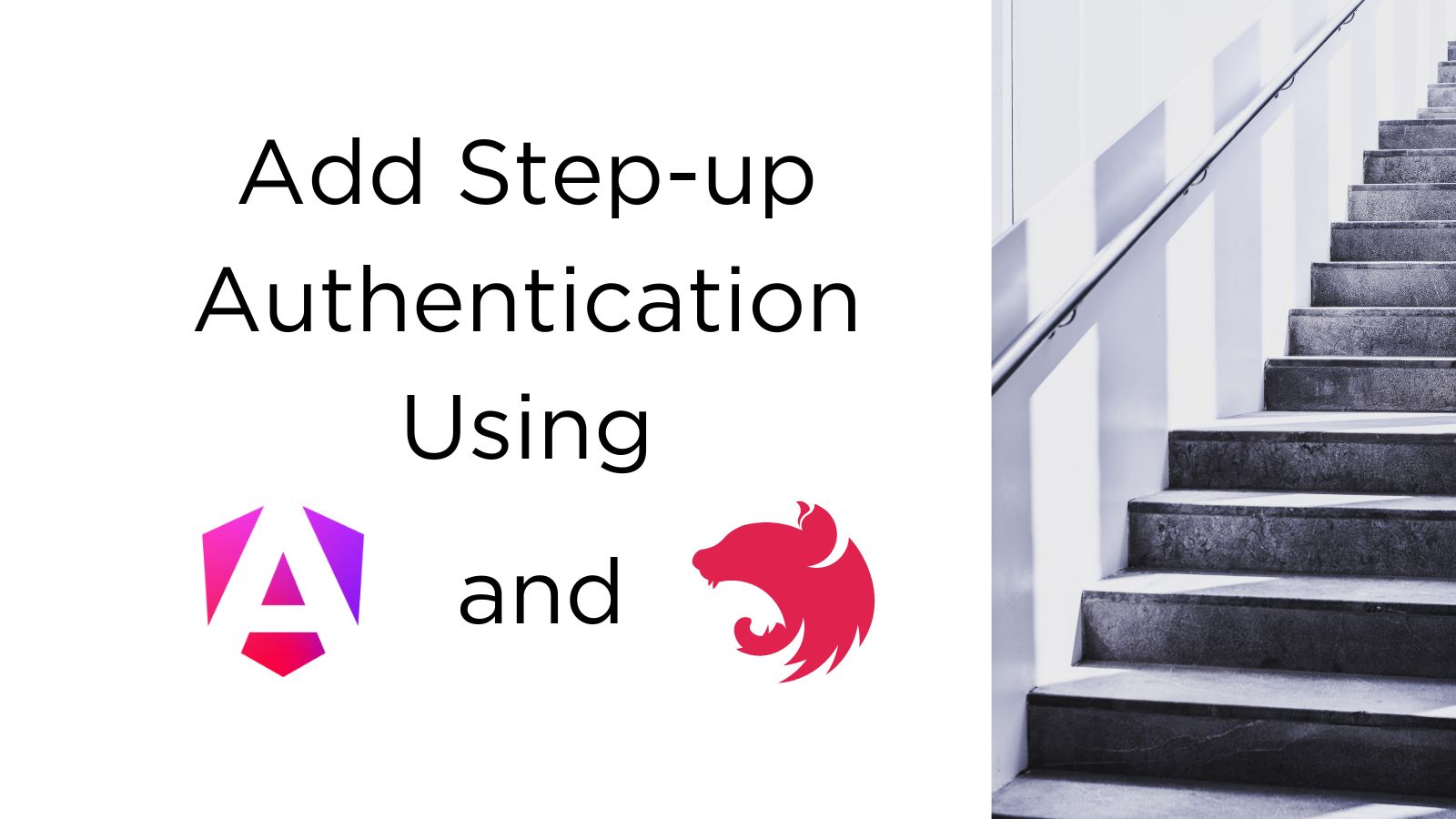
The applications you work on expect good authentication as a secure foundation. In the past, we treated authentication as binary. You are either authenticated or not. You had to set the same authentication mechanism for access to your application without a standard way to change authentication mechanisms conditionally. Consider the case where sensitive actions warrant verification, such as making a large financial transaction or modifying top-secret data. Those actions require extra scrutiny! Note: In May...
Flexible Authentication Configurations in Angular Applications Using Okta
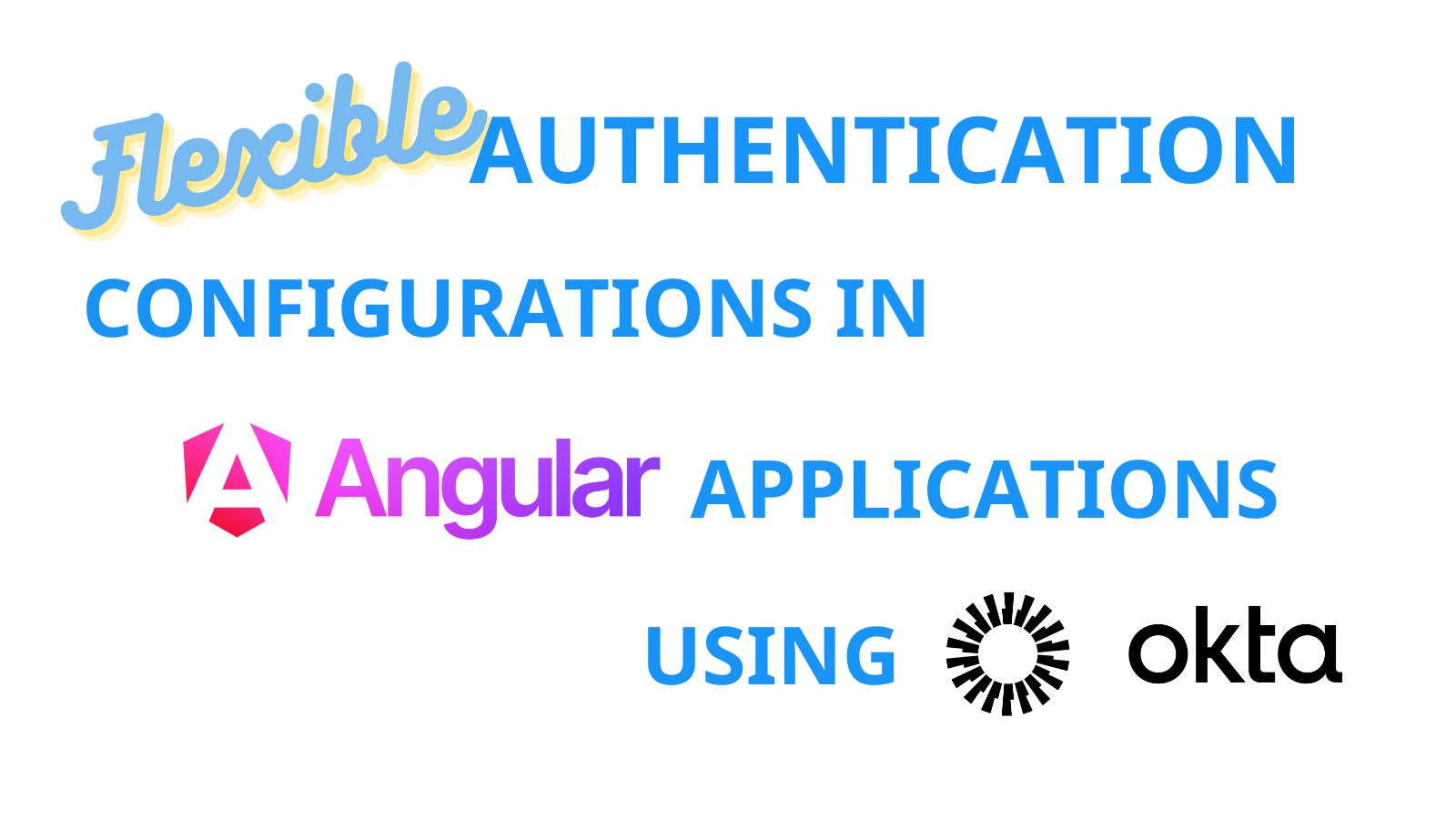
Are you ready to hear about the ultimate flexibility in configuring authentication properties in the Okta Angular SDK? You’ll want to check out this excellent new feature and walk through the steps of adding authentication using Okta to Angular applications. Note: In May 2025, the Okta Integrator Free Plan replaced Okta Developer Edition Accounts, and the Okta CLI was deprecated. We preserved this post for reference, but the instructions no longer work exactly as written....
Enterprise Maturity Workshop: Automate with no-code Okta Workflows
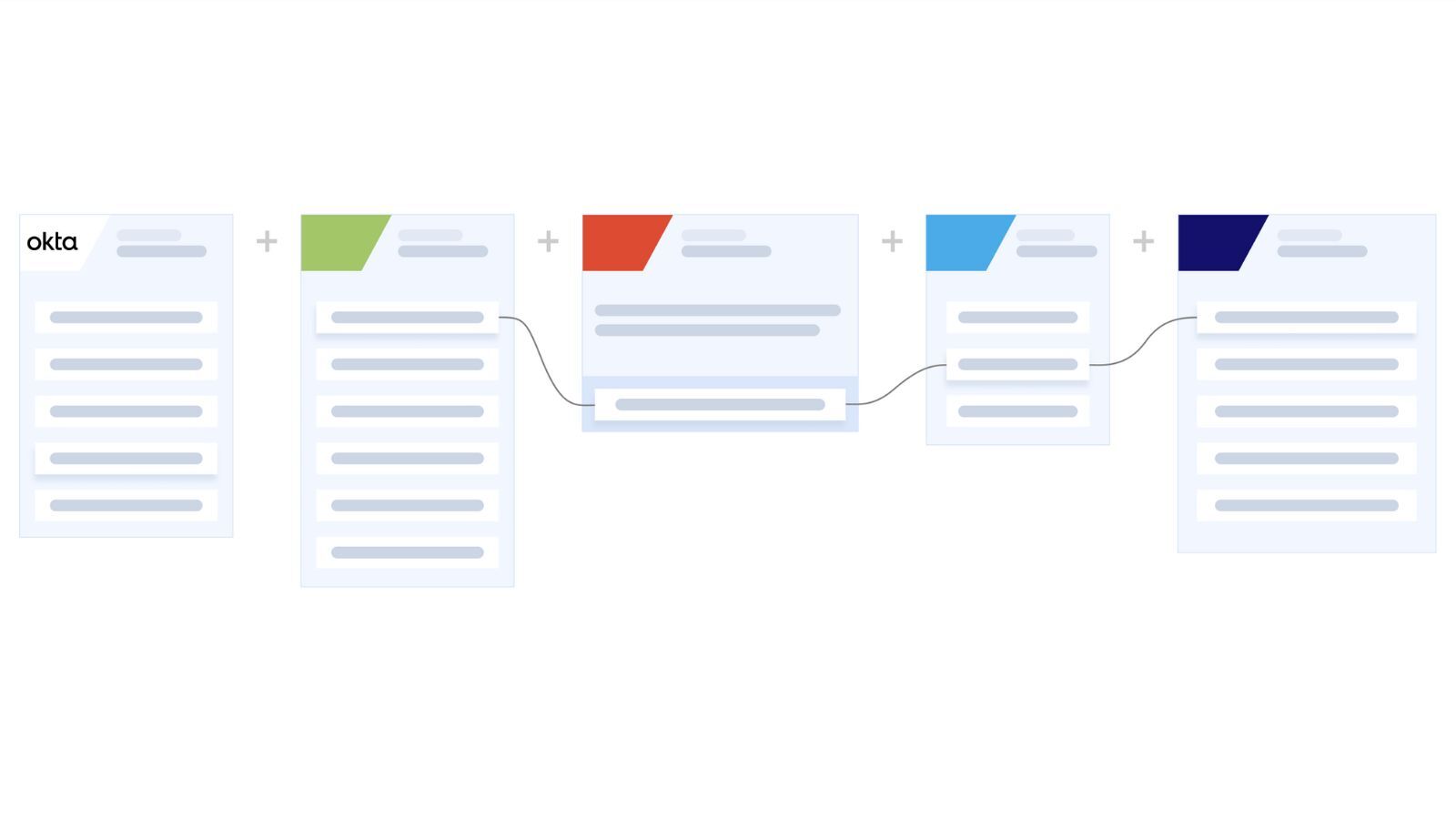
This tutorial is part of the on-demand workshop series. In this workshop, you’ll enhance the base Todo application by creating an automated report using Okta’s no-code Workflows platform. Table of Contents What is Okta Workflows? Getting access to Okta Workflows Creating a flow Okta Workflows building blocks Setting up the Todo application Enhancing the Todo application with a new API Launching the API in a local tunnel Building the Todo Report flow Updating the flow...
Enterprise-Ready Workshop: Authenticate with OpenID Connect

This workshop is part of our Enterprise Readiness Workshop series. In this workshop, you will be wearing the hat of a SaaS developer who will up-level his/her app to allow users (from your big enterprise customers) to log on using their own company credentials without providing a password directly to your app. When any enterprise customer considers buying your software to enhance their employees’ productivity, their IT and security teams want to make sure employees...
How Authentication and Authorization Work for SPAs

Adding authentication to public clients such as Single Page Applications (SPA) and JavaScript applications can be a source of confusion. Identity Providers like Okta try to help you via multiple support systems. Still, it can feel like a lot of work. Especially since you’re responsible for way more than authentication alone in the applications you work on! As part of authentication, your client application makes multiple calls to an authorization server, and you get back...
Secure Secrets with Spring Cloud Config and Vault

In 2013, GitHub released a search feature that allows users to scan code in all public repositories. A day after the release, however, they had to partially shut it down. It was speculated that the shutdown was because the feature allowed any user to search for all kinds of secrets stored in GitHub repositories. Later, in 2014, data on 50,000 Uber drivers was stolen. It seems someone got access to the company’s database using login...
Introducing the New Okta Mobile SDKs

For years the Okta OIDC SDK was the primary tool mobile developers used to integrate their apps with Okta, but as with all things in life, entropy takes its toll. Over time, as platforms and languages change, or new features become available, a refactor is required. Today we’re proud to announce that the Okta Mobile SDKs for Swift and Kotlin are now available! Recent advances at Okta, such as support for Device Single Sign On...
Add Auth to Any App with OAuth2 Proxy
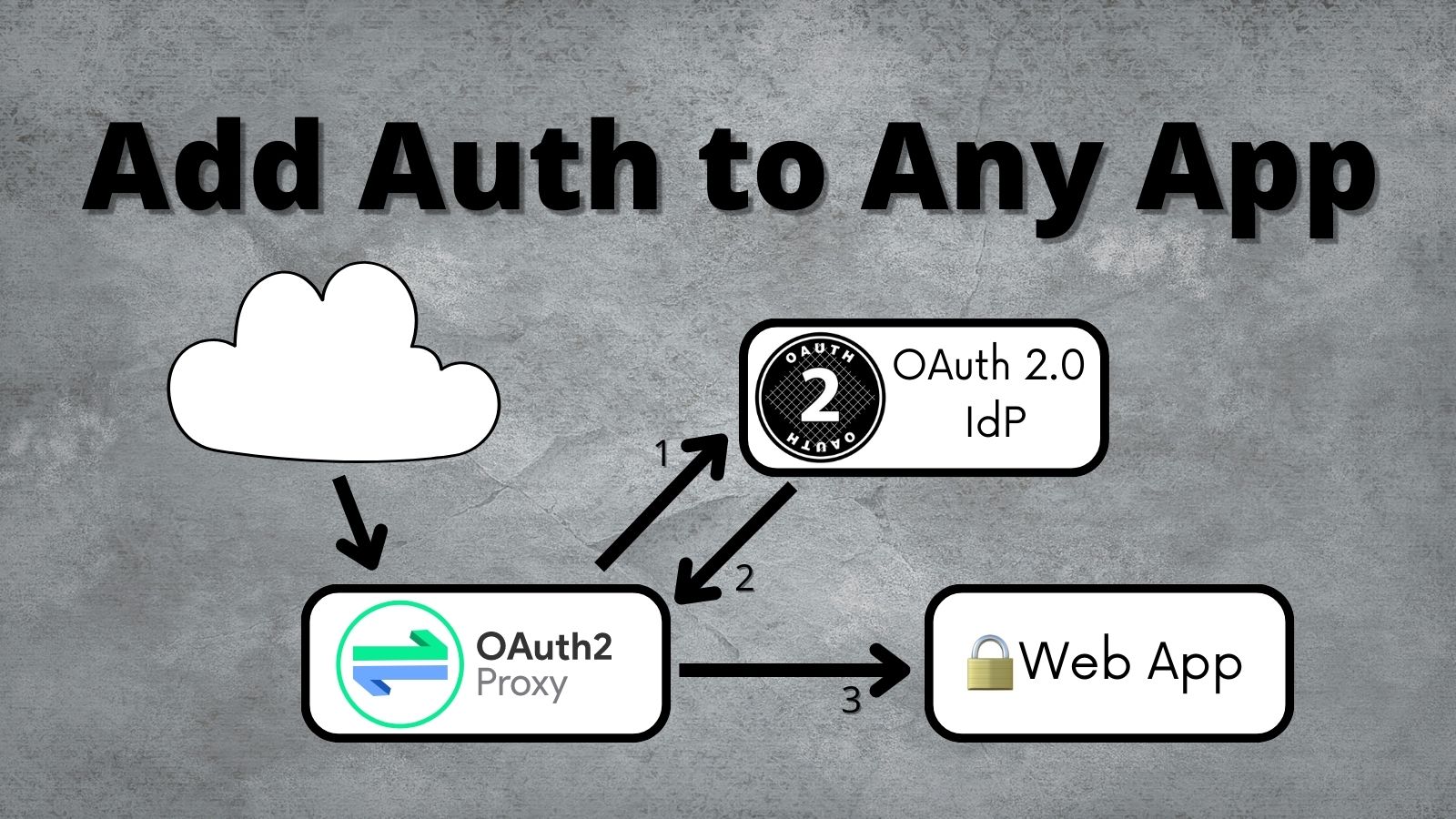
Updating an application to use OAuth 2.0 doesn’t need to be complicated. Most of the time, your language or framework will already have an OAuth library. Sometimes, this isn’t the case, and you need to find an alternative. In this post, I’ll walk through setting up and using OAuth2 Proxy to secure your application without any code changes! OAuth2 Proxy is a reverse proxy that sits in front of your application and handles the complexities...
Boost Your Productivity Using Okta CLI with Fig
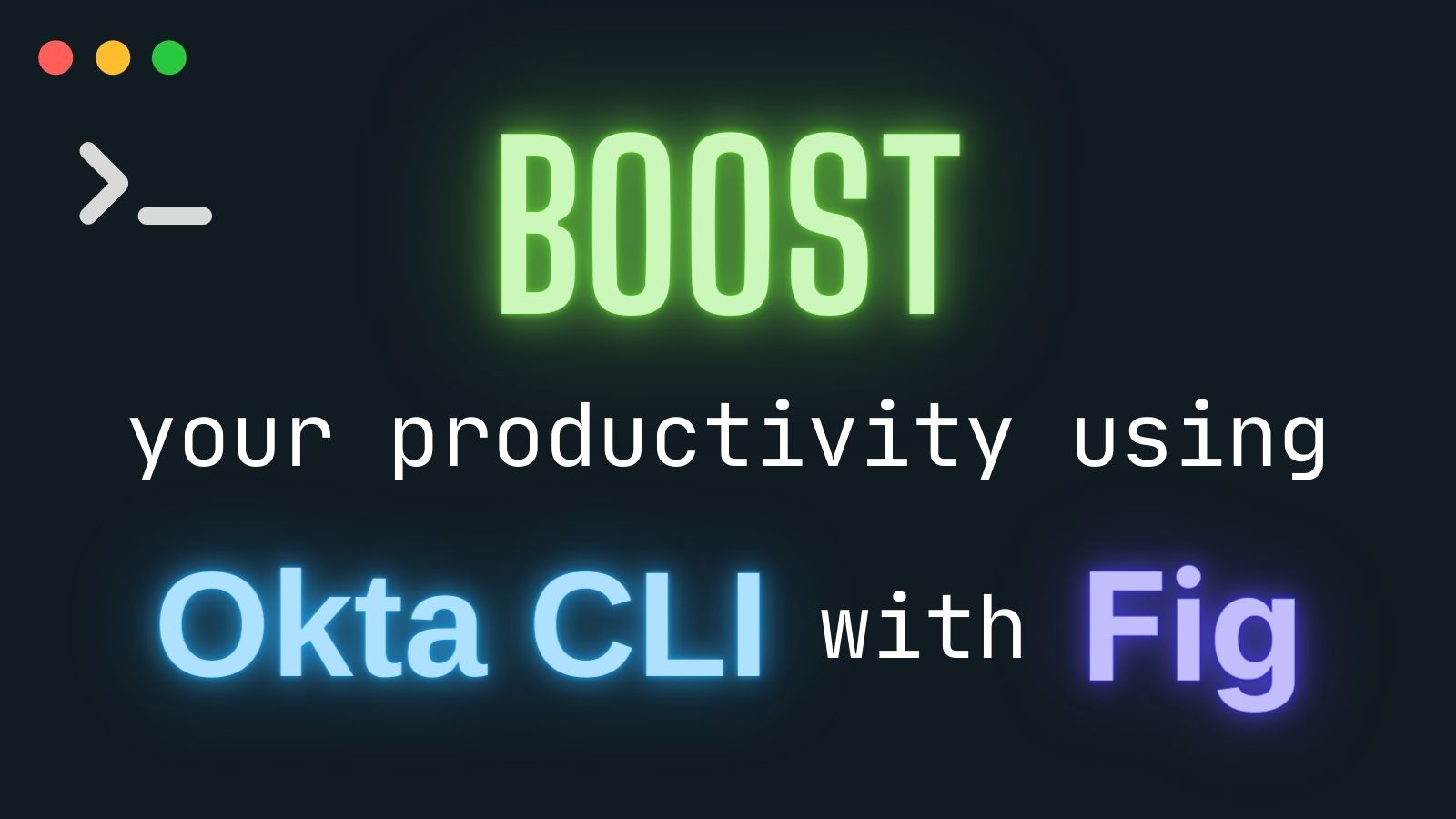
CLIs are great. I love the speed and productivity increases I get when using a CLI, but memorizing commands – especially when commands need arguments, options, flags, and so on – can be daunting. Luckily, there are tools available for CLI fans out there, and one tool I’ve been enjoying is Fig. Fig powers up your CLI productivity Fig adds autocompletion to supported terminals, which makes using CLIs so much easier. Using Git? You’ll see...
How to Secure Your Kubernetes Clusters With Best Practices

Kubernetes has become an unavoidable part of a software infrastructure these days. If you are an enterprise or medium/large company, chances are you are already running Kubernetes clusters for your workloads. If you are a DevOps engineer, there is a good chance you are maintaining either an on-prem Kubernetes cluster or a PaaS like Amazon EKS, Microsoft AKS, or GKE. But regardless of how you run your Kubernetes clusters, you need to make sure that...
How to Secure Your Kubernetes Cluster with OpenID Connect and RBAC
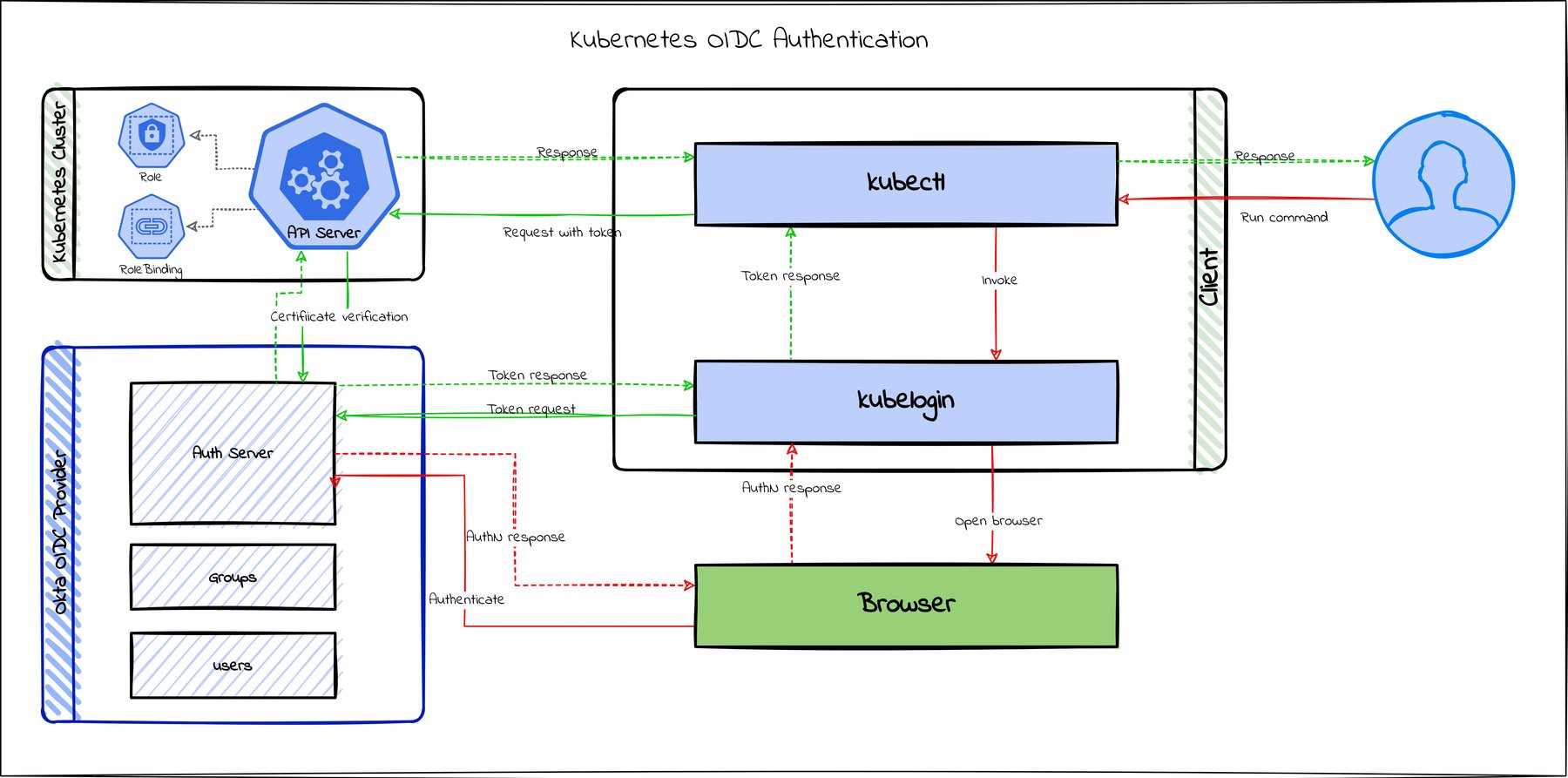
A Kubernetes (k8s) cluster comprises worker machines called nodes and a control plane consisting of the API server, scheduler, etcd, controller manager, and in the case of a PaaS (platform as a service), the cloud controller manager. The containers deployed to the cluster run in pods on the worker nodes. At the same time, the control plane takes care of scheduling, responding to requests, and managing the cluster. When you communicate with a Kubernetes cluster,...
The Things to Keep in Mind about Auth
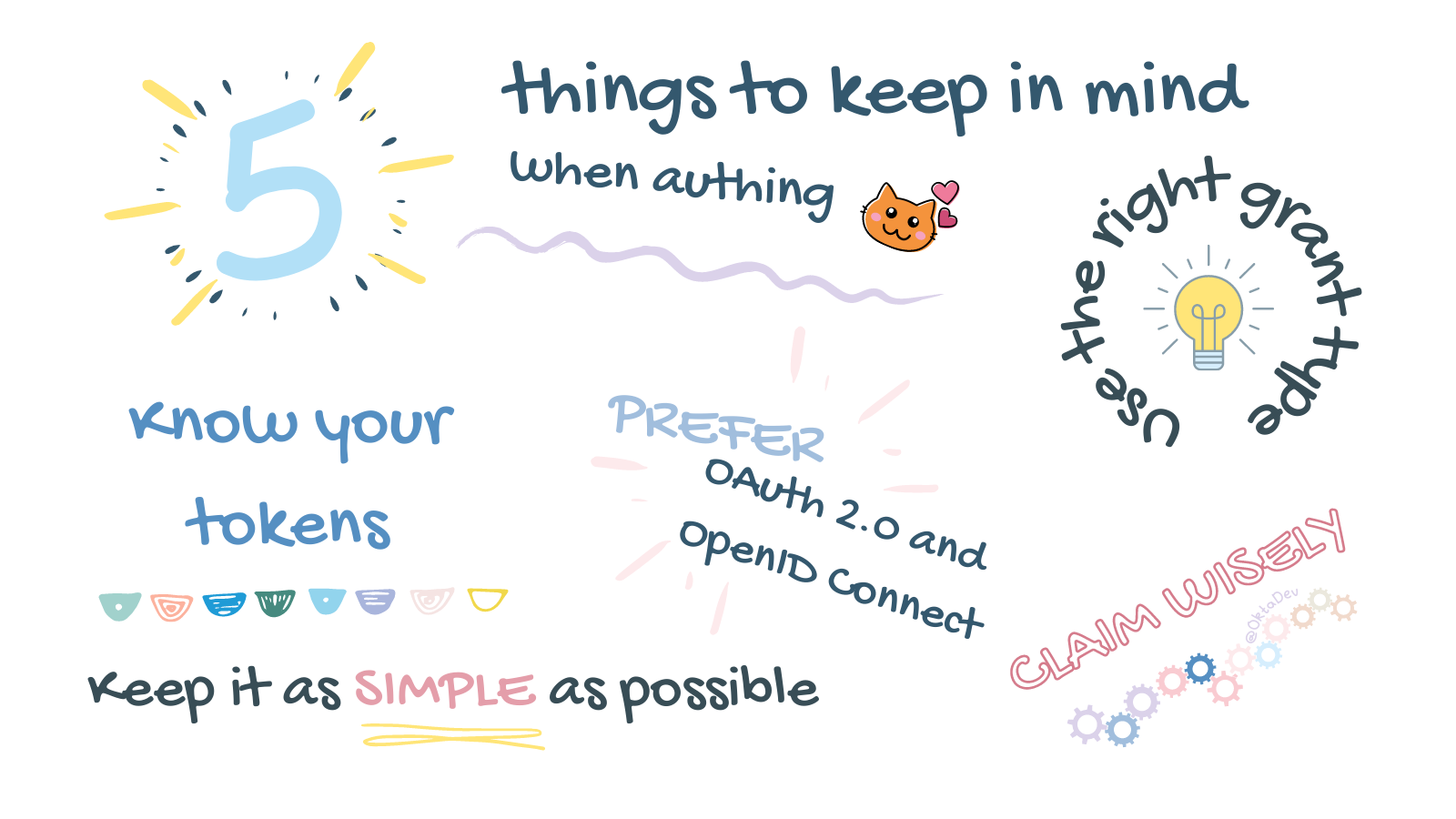
There’s a lot of information out there about adding authentication to your app, which is helpful! But also overwhelming. It can be hard to find relevant and up-to-date information. Security best practices and technologies change, so refreshing your understanding and keeping up with current best practices is a good thing. Here are some notes I took while I reviewed my knowledge and applied my experience implementing auth. Prefer OAuth 2.0 and OpenID Connect If you’re...
Secure Access to AWS EKS Clusters for Admins
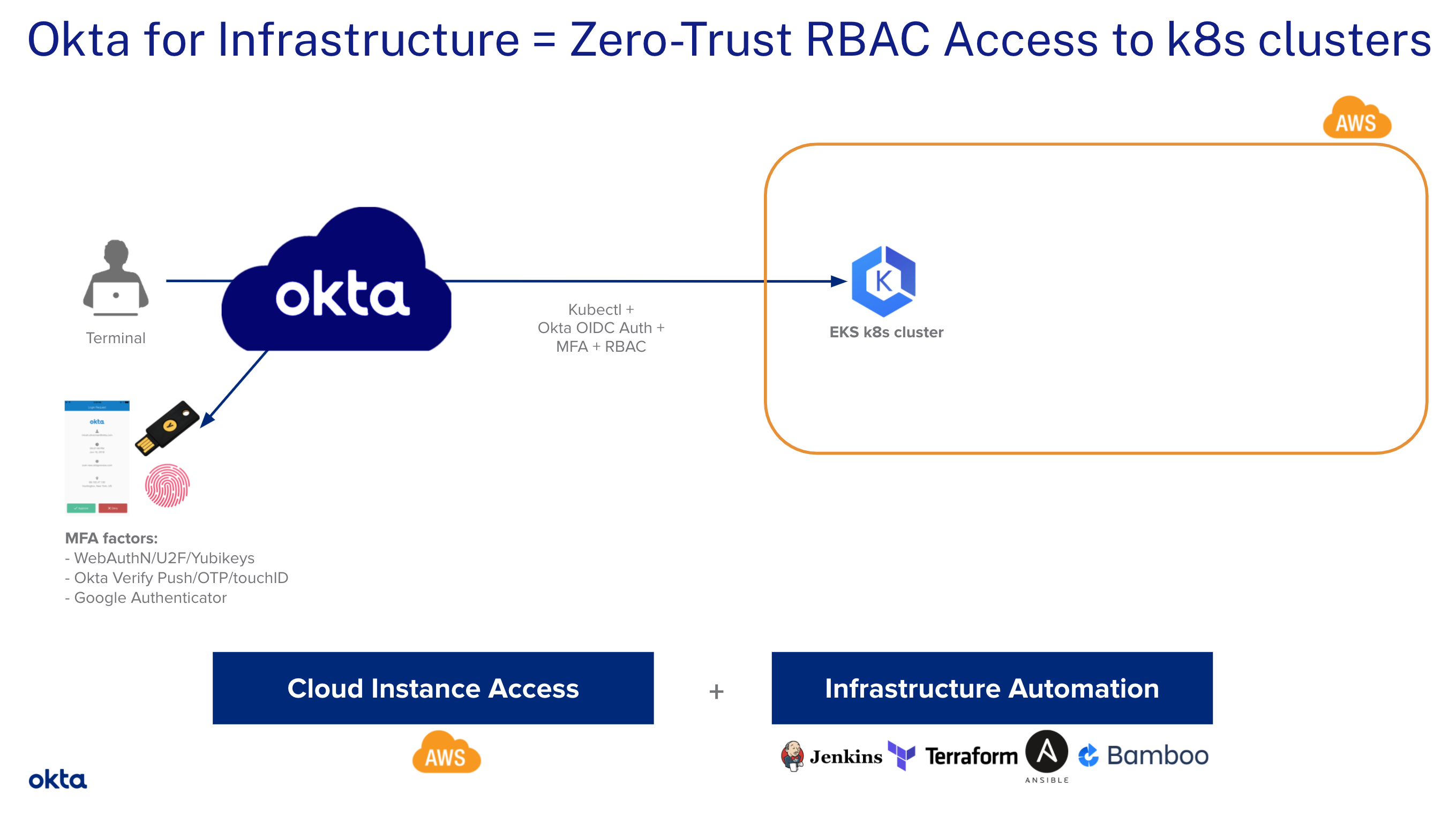
In this tutorial, we will leverage OpenID Connect (OIDC) to allow our DevOps team to securely access their EKS clusters on AWS. We use Role Based Access Control (RBAC)] to enforce the least privilege required without the need to configure AWS IAM roles. 😎 We’ll highlight the steps to manually enable an OIDC provider on your EKS clusters. At the end of this tutorial, we’ll point to resources you can leverage to automate all those...
Learn How to Build a Single-Page App with Vue and Spring Boot
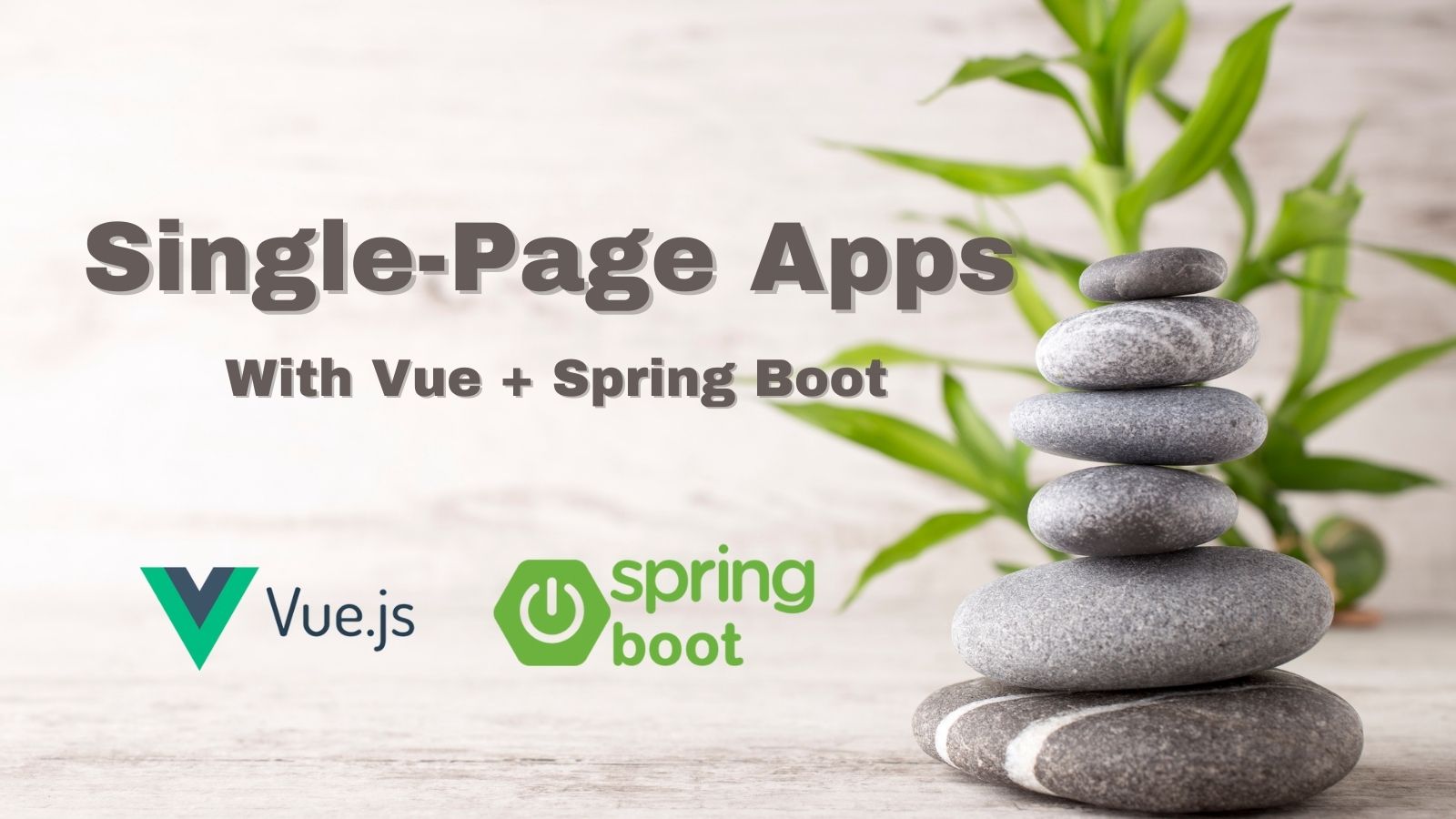
In this tutorial, you are going to create a single-page application (SPA) that uses a Spring Boot resource server and a Vue front-end client. You’ll see how to configure Spring Boot to use JSON Web Tokens (JWT) for authentication and authorization, with Okta as an OAuth 2.0 and OpenID Connect (OIDC) provider. You’ll also see how to bootstrap a Vue client app with the Vue CLI and how to secure it using the Okta Sign-In...
Session Clustering for OAuth 2.0 Applications
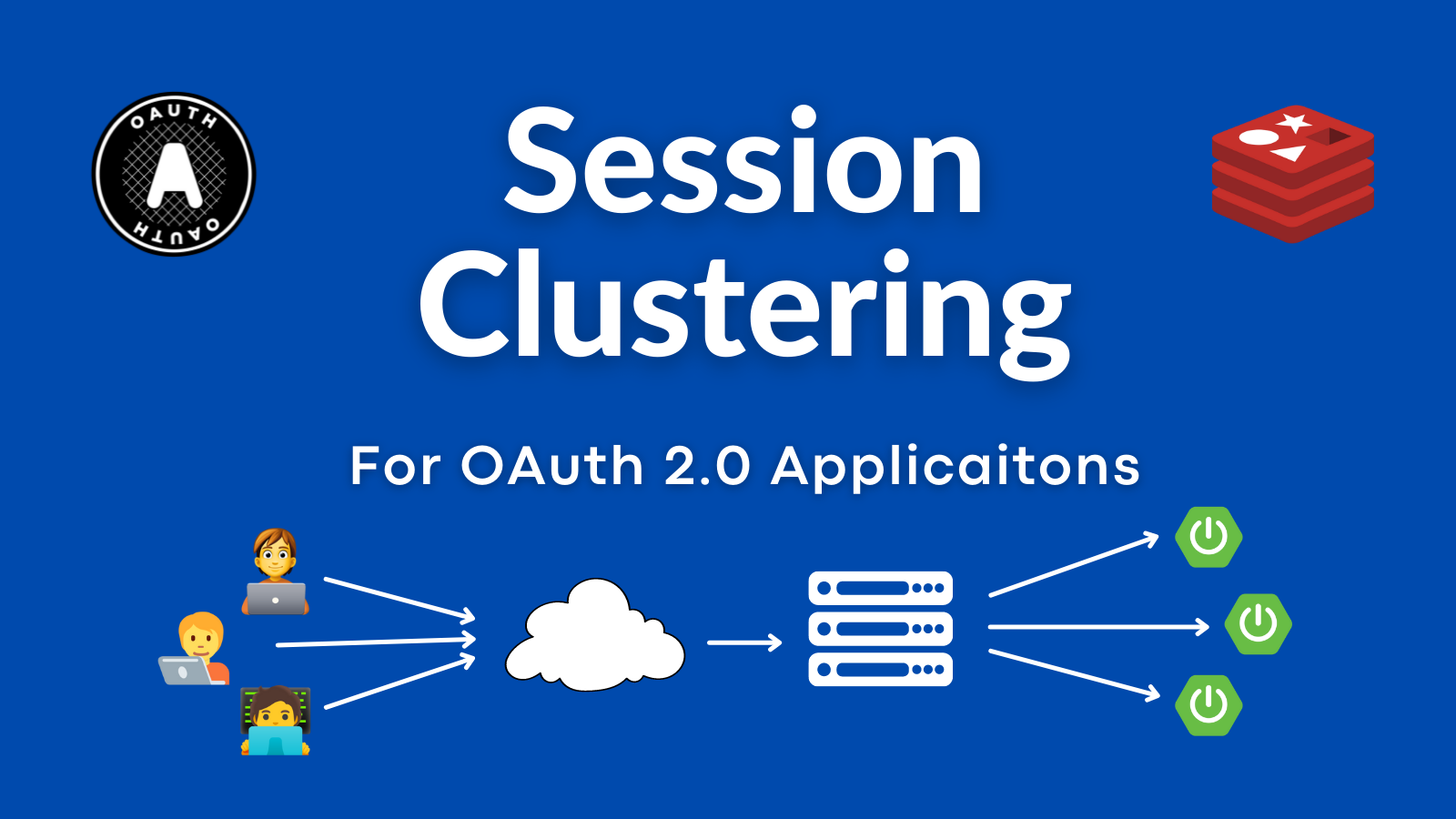
A common OAuth 2.0 question we get: "How do I deal with OAuth in a load-balanced application?" The short answer: There’s nothing specific about session clustering for OAuth. The longer answer is—you likely still need to worry about cluster session management. This post will discuss how an OAuth login relates to your application’s session. And we’ll build a simple, secure, load-balanced application to demonstrate. Note: In May 2025, the Okta Integrator Free Plan replaced Okta...
Centralize Authentication at the Gateway with Apache APISIX and OpenID Connect

Apache APISIX is a dynamic, real-time, high-performance API gateway, providing rich traffic management. The project offers load balancing, dynamic upstream, canary release, circuit breaking, authentication, observability, and many useful plugins. In addition, the gateway supports dynamic plugin changes along with hot-plugging. The OpenID Connect plugin for Apache APISIX allows users to replace traditional authentication mode with centralized identity authentication mode via OpenID Connect. NOTE: This post originally appeared on the Apache APISIX blog. Table of...
How to Prevent Reactive Java Applications from Stalling

Modern applications must work smoothly on high loads and with a high number of concurrent users. Traditional Java applications run blocking code and a common approach for scaling is to increase the number of available threads. When latency comes into the picture, many of these additional threads sit idle, wasting resources. A different approach increases efficiency by writing asynchronous non-blocking code that lets the execution switch to another task while the asynchronous process completes. Project...
What Apple's App Tracking Changes Mean for Developers
You know how you will see an ad on Instagram for something that you just searched for hours earlier? This is in no small part due to a special API for iOS that allows app developers to track your behavior across apps, even those by different developers. Well, all of this is changing with the rollout of iOS 14.5, so let’s take a look at what exactly is changing and what this means for app...
Set Access Control Policies With Kong Konnect and Okta

In our last Kong and Okta tutorial, we will implement a basic access control policy based on Okta’s groups and planes. This series will show you how to implement service authentication and authorization for Kong Konnect and Okta using the OpenID Connect (OIDC) plugin. Parts 1, 2 and 3 covered: Implement client credentials for application authentication Authorization Code for user authentication Implement introspection flow for token validation Table of Contents How Access Control Works Configure...
Implement Introspection Flow With Kong Konnect and Okta

In our third Kong and Okta tutorial, we’ll go through the introspection flow implementation. This series will show you how to implement service authentication and authorization for Kong Konnect and Okta using the OpenID Connect (OIDC) plugin. Parts 1, 2 and 4 cover: Implement Client Credentials with Kong Konnect and Okta Authorization Code for user authentication Access control based on Okta’s groups and planes Table of Contents Konnect and Okta Integration Topology Introspection Flow Set...
Apply Authorization Code Flow With Kong Konnect and Okta

We’ll go through the authorization code flow applied to user authentication processes in our second Kong and Okta tutorial. This series will show you how to implement service authentication and authorization for Kong Konnect and Okta using the OpenID Connect (OIDC) plugin. Parts 1, 3, and 4 cover: Implement Client Credentials with Kong Konnect and Okta Implement Introspection Flow With Kong Konnect and Okta Access control based on Okta’s groups and planes Table of Contents...
Implement Client Credentials with Kong Konnect and Okta

Using Kong’s OpenID Connect (OIDC) plugin, Kong and Okta work together to solve three significant application development challenges: Connectivity Authentication Authorization The OIDC plugin enables Kong, as the API gateway, to communicate with Okta via the OAuth/OIDC flows. That way, your app teams don’t have to configure and diagnose authentication and authorization for each service individually. With these challenges solved, app teams have more time to build and innovate. Table of Contents Kong Konnect and...
OAuth Patterns and Anti-Patterns - a DZone Refcard

I’m happy to announce the release of a brand new OAuth cheat sheet published through DZone’s Refcardz, “OAuth Patterns and Anti-Patterns”. This five-page reference guide covers the latest in OAuth and clarifies some common misunderstandings of applying it to real world use cases. With a focus on OAuth 2.0, OpenID Connect, and best practices, you’ll quickly learn how to avoid some common mistakes and how to make your applications and APIs more secure. The “OAuth...
Unity WebGL + PlayFab Authorization in 20 Minutes
As game creators, we hold a fundamental responsibility to protect and secure any and all data that our players entrust to us. Historically, security in games has not been high on the priority list because games were enjoyed anonymously and offline. But with our society becoming ever more connected, demand for social gaming experiences and online gaming features has increased exponentially. This has led to the development of cloud-based gaming platforms, such as PlayFab, that...
Android Login Made Easy with OIDC

Having a dedicated part of a mobile app for authorized users is a must for a modern-day app. Users want to have a personalized experience with the apps they love. They expect to seamlessly use services on different devices and platforms. And, most of all, they want to be sure that their personal data is secure. Implementing a secure login process on Android can be challenging to achieve since many different moving parts need to...
One Identity Across Salesforce.com and Mulesoft

Today, I’m going to show you how to plug Okta into a Force.com application (along with Mulesoft’s API gateway) using the OpenID Connect protocol (aka ‘OIDC’). By the end of this tutorial, your Force.com application will have user authentication backed by Okta and will be able to securely call your backend APIs through Mulesoft’s API gateway. Sound good? Let’s get to it! What’s Force.com? Force.com is Salesforce’s Platform-as-a-Service (aka ‘PaaS’) which allows you to develop...
Introducing the Okta CLI
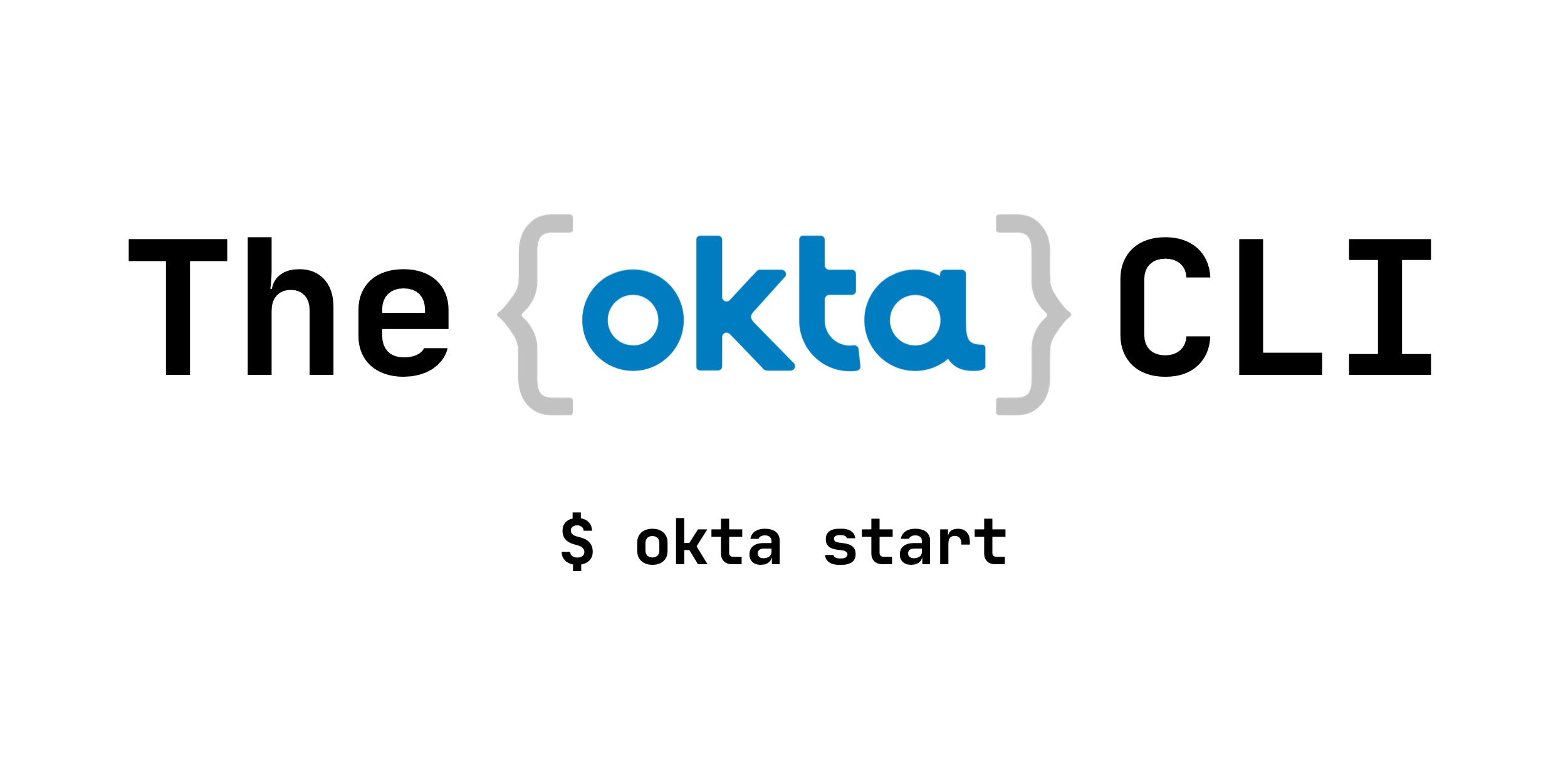
Okta is an Identity Management Platform that takes all the hassle out of authentication and authorization. It’s feature-packed with everything from workforce integrations for G-Suite to the latest version of OAuth 2.0 as-a-service for developers writing their own APIs. It can sometimes be a daunting task for developers to get started with Okta because of how feature-rich it is. Introducing the Okta CLI - made by developers for developers. Using the CLI tool, you can...
Test in Production with Spring Security and Feature Flags

Okta is an Identity and Access Management platform. The TL;DR: you offload the responsibility for secure authentication and authorization to Okta so you can focus on the business logic of the app you’re building. Okta and Spring Boot already go together like peanut butter and chocolate. Add in feature flags care of Split, and you can test new capabilities for your app without having to redeploy. That’s testing in production the smart way! And, you...
OAuth 2.0 Patterns with Spring Cloud Gateway
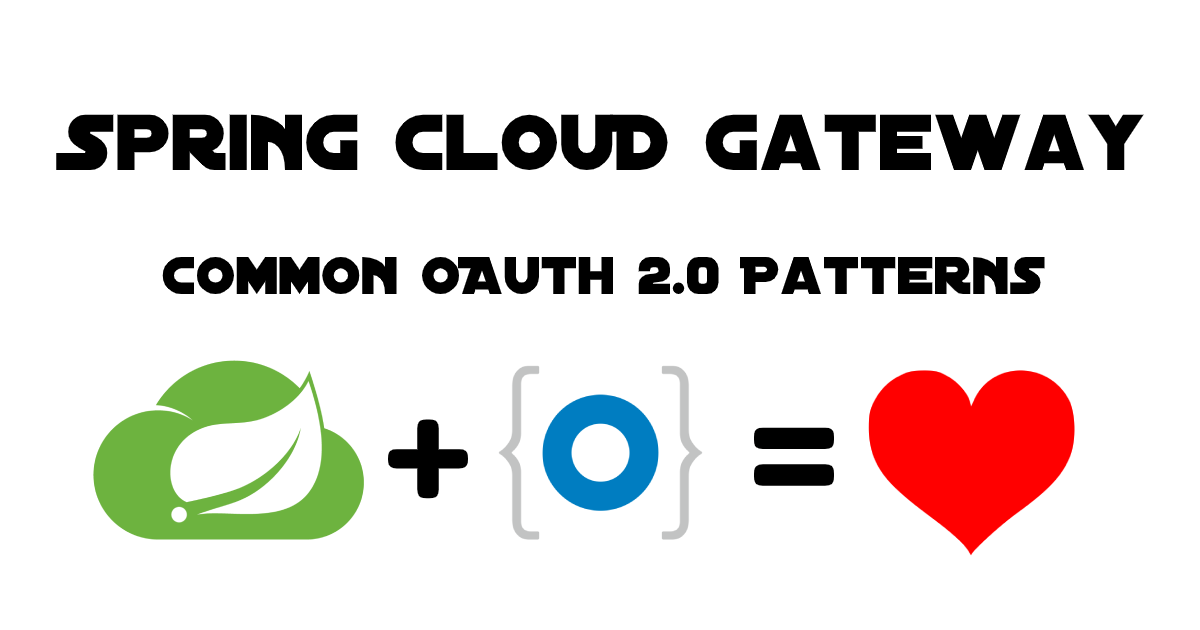
Note: In May 2025, the Okta Integrator Free Plan replaced Okta Developer Edition Accounts, and the Okta CLI was deprecated. We preserved this post for reference, but the instructions no longer work exactly as written. Replace the Okta CLI commands by manually configuring Okta following the instructions in our Developer Documentation. Spring Cloud Gateway is the Reactive API Gateway of the Spring Ecosystem, built on Spring Boot, WebFlux, and Project Reactor. Its job is to...
Node.js Login with Express and OIDC
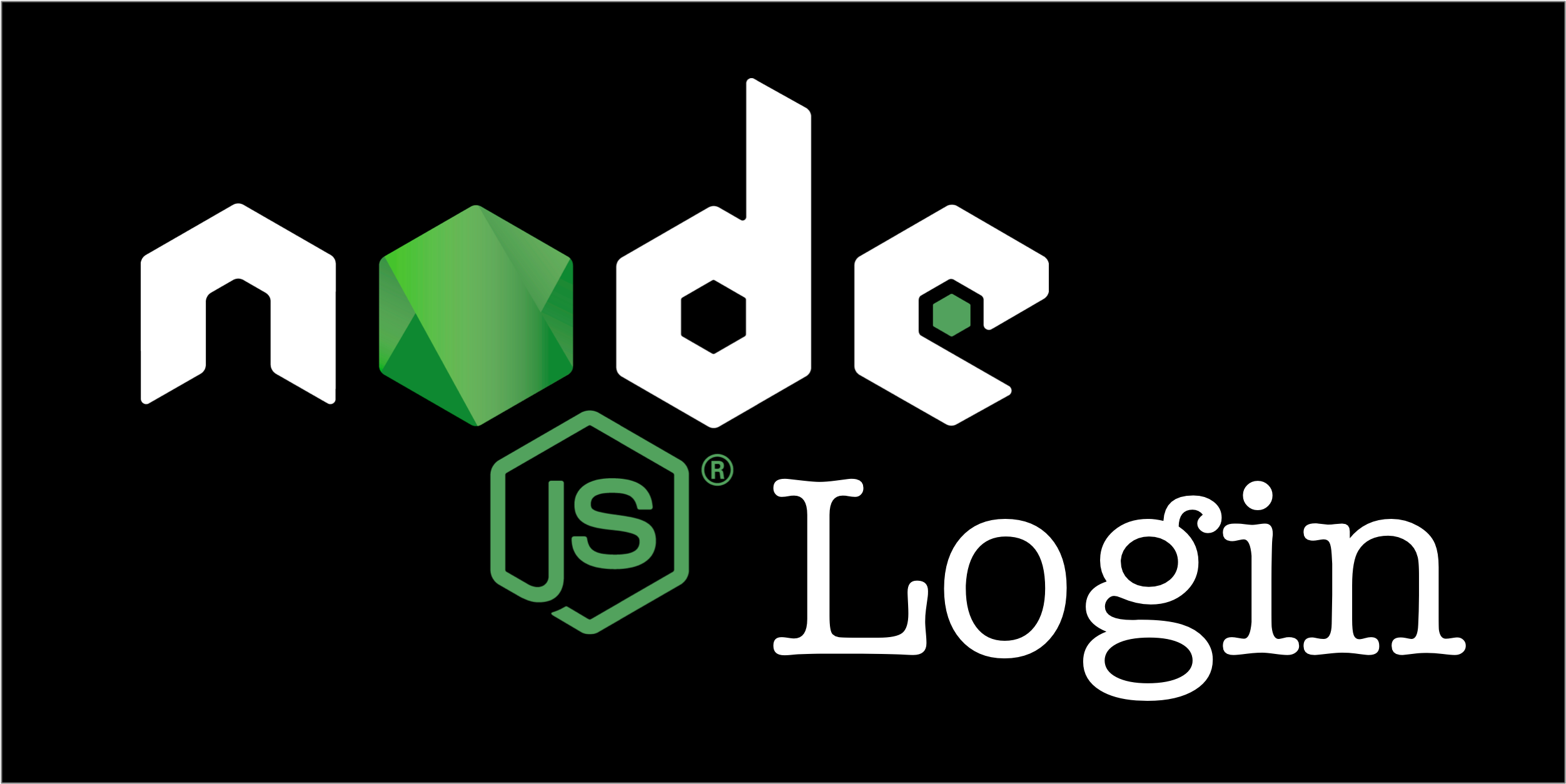
Node.js just celebrated its 11th birthday on May 27! With the state of things nows, it’s pretty crazy to think back to the massive JavaScript Renaissance boost of 2009. In case you’re not aware, the JavaScript Renaissance began in around 2004 with Ajax, increased exponentially with jQuery in the mid-2000s, and then really took off with Node.js and a plethora of early JavaScript web frameworks; including Backbone.js, Ember.js, and AngularJS. Today, I’d like to show...
Secure Secrets With Spring Cloud Config and Vault
Build an Android Application with Authentication

With mobile apps becoming ever-present in users' lives, following best security practices has become essential in protecting your users and your apps. Implementing security alone and from the ground up can be costly for your development team, create a less-than-ideal user experience, and be susceptible to design/implementation errors. The easiest path to strong security, and a positive user experience, is to turn to the experts. The Okta OIDC SDK can help with this in many...
What's New with OAuth and OpenID Connect?

In this video you'll learn about the latest developments in the OAuth and OpenID Connect specs from Aaron Parecki, a regular contributor to the OAuth working group. The latest additions to the specs enable richer experiences and better security for applications using OAuth.
OpenID Connect Logout Options with Spring Boot
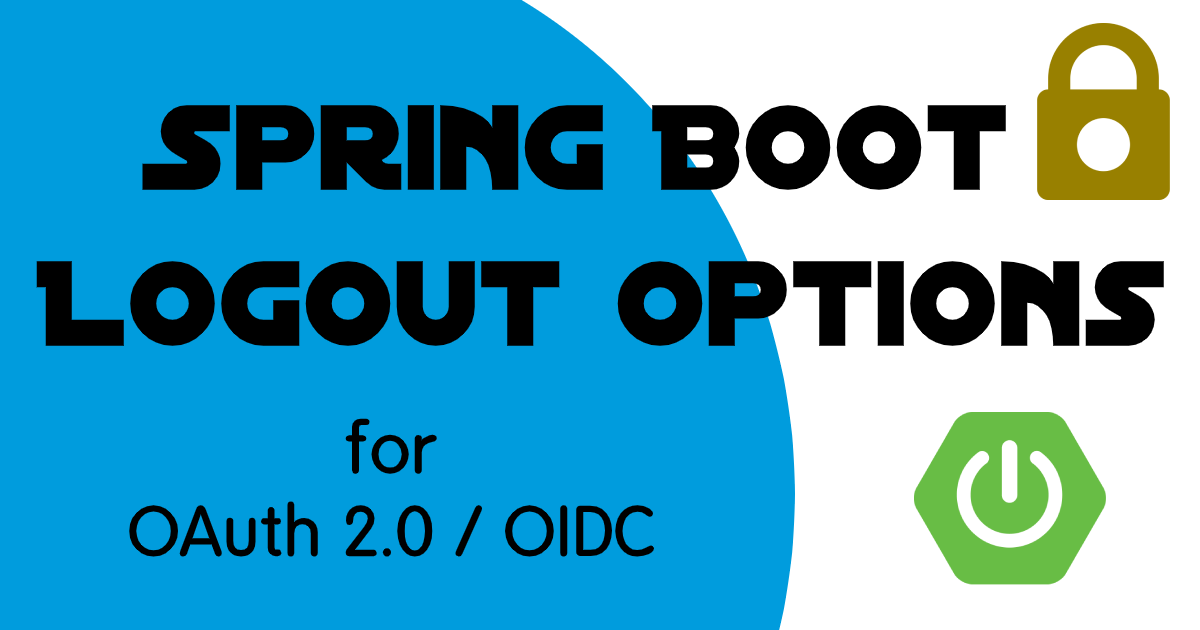
On the Okta blog, we spend much of our time talking about logging in. That is because once you configure your application to log in, the log out just works. But there are a few things you should consider when you’re thinking about your app’s logout configuration. In this post, I’ll walk through examples of the two logout options you have with Spring Security: the "default" session clearing logout, and relying party initiated logout. If...
Build Single Sign-on in Java
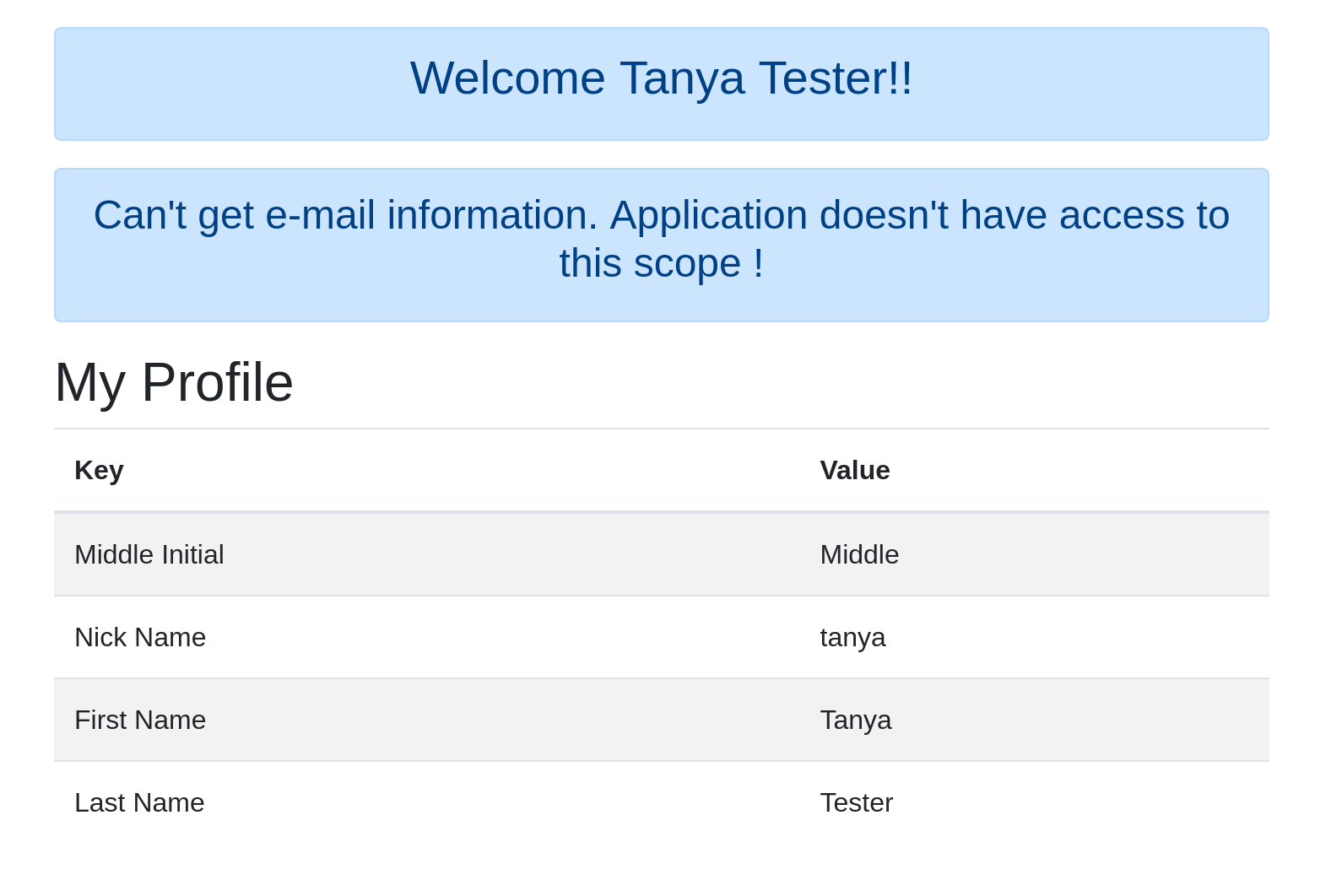
In modern app development, you quite frequently have a single resource server that provides data to multiple client applications. These applications may share a similar set of users, but need to enforce different permissions. For example, it’s possible that not all users of the first application should be allowed to access the second (think of, for example, an admin console application versus a client or user application). How would you implement this? One way to...
Build a CRUD Application with Kotlin and React
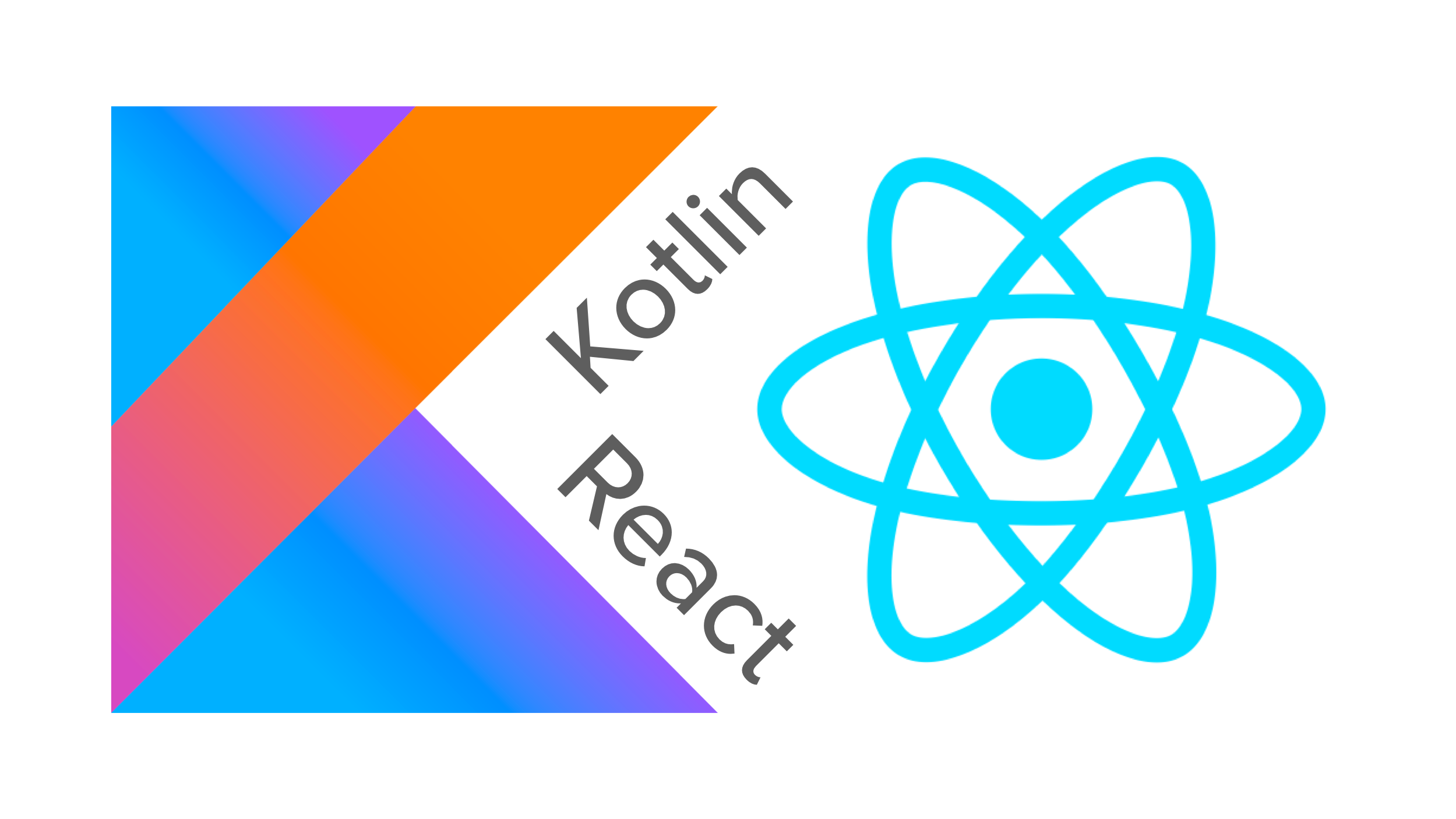
In this tutorial, you’re going to build a client and server application using React for the frontend and Kotlin with Spring Boot for the backend. You’ll first build the app unsecured before securing it using Okta. To secure the React frontend, you’ll use OAuth 2.0 login, and for the backend, you’ll use a JSON Web Token and Spring Boot’s resource server OAuth implementation. This tutorial covers a lot of ground. It also uses a lot...
Secure Legacy Apps with Spring Cloud Gateway

One of the biggest challenges of adding OAuth 2.0 support to legacy applications is a lack of support in the underlying framework. Maybe it’s homegrown, or maybe it’s just old? Either way, migrating away from an old form-based login doesn’t need to be so painful. In this post, I’ll walk you through a low-code option using Spring Cloud Gateway and Okta. You’ll learn how to setup Spring Cloud Gateway running as a stand-alone application that...
Add Docker to Your Spring Boot Application

Docker enables you to deploy a server environment in containers. A container is a standardized unit of software that assembles code, runtime, dependencies, settings, and initialization in a single package that you can run reliably from one computing environment to another. Deploying your app as a Docker container is not hard, and can alleviate a lot of problems that you may encounter when moving your app around the multiple environments it has to go, like...
Use Okta Token Hooks to Supercharge OpenID Connect

OpenID Connect (OIDC) and OAuth 2.0 are already recognized as powerful tools for incorporating authentication and authorization into modern web applications. Okta has enhanced the capabilities of these standards by introducing our Inline Hooks feature. There are a number of different types of inline hooks that Okta supports. In this post, I focus on hooks that allow you to patch information into the tokens you get back from Okta via OIDC and OAuth. You’ll first...
Kotlin: A Beginner's Guide and Tutorial
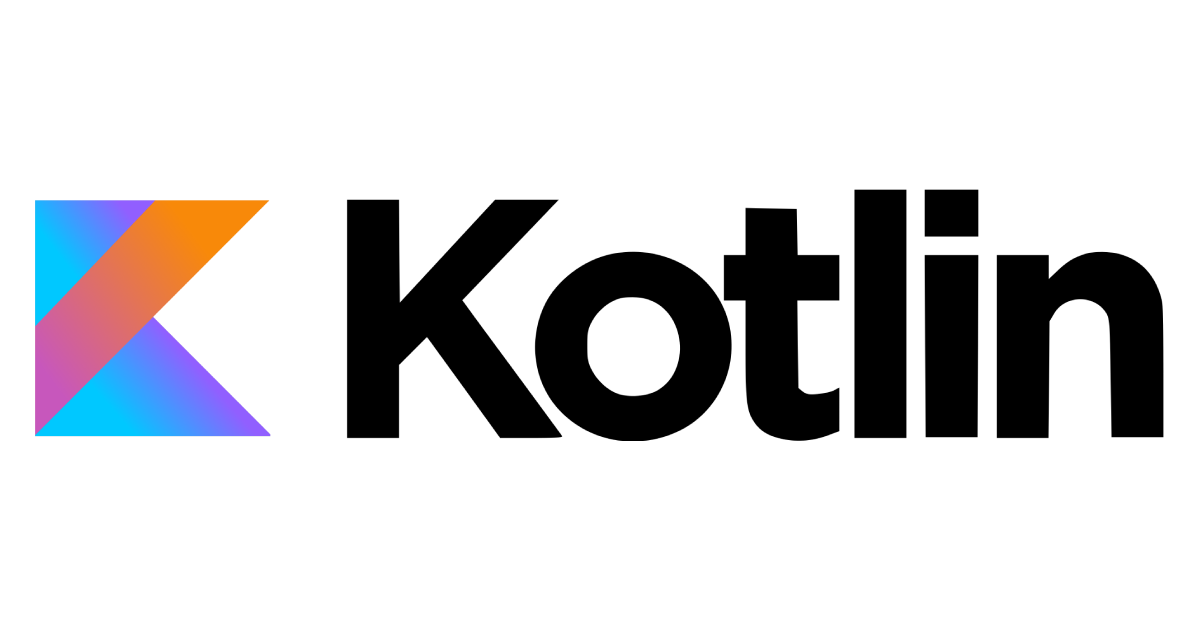
Kotlin is a modern, statically typed language within the JVM. Kotlin is a cross-platform, multi-purpose, free and open-source language developed by JetBrains under the Apache 2.0 license and has constructs for both Object Oriented and Functional programming styles, which can be mixed. It can be used for web development, server and client, and mobile development, using most Java IDEs. Kotlin is an awesome option for Java developers because it is concise, expressive, and safe. According...
Deploy Your Spring Boot App the Right Way

Spring Boot is an awesome solution to speed up the development cycle of your app. Have an idea and want to transform it into a Spring Boot app, but don’t know the best way to deploy it? Look no further, we will help you out! There are plenty of options to deploy Spring Boot applications. In this article. we will cover three of them: Azure Amazon Web Services Self-hosted We will use a simple application...
A Quick Guide to Java on Netty

Netty is a non-blocking input/output (NIO) framework that makes it relatively simple to develop low-level network servers and clients. Netty provides an incredible amount of power for developers who need to work down on the socket level, for example when developing custom communication protocols between clients and servers. It supports SSL/TLS, has both blocking and non-blocking unified APIs, and a flexible threading model. It’s also fast and performant. Netty’s asynchronous, non-blocking I/O model is designed...
ASP.NET Core 3.0 MVC Secure Authentication

On September 23rd, Microsoft announced the third major release of its .NET Core framework. This new release boasts better performance, support for Windows Desktop apps, improved support for Docker containers, and more. Naturally, I was excited to see this new release and get authentication hooked into it with Okta! I put together this tutorial to demonstrate how to quickly and securely set up user management with Okta and OIDC (OpenID Connect) in an ASP.NET Core...
Create a React Native App with Login in 10 Minutes
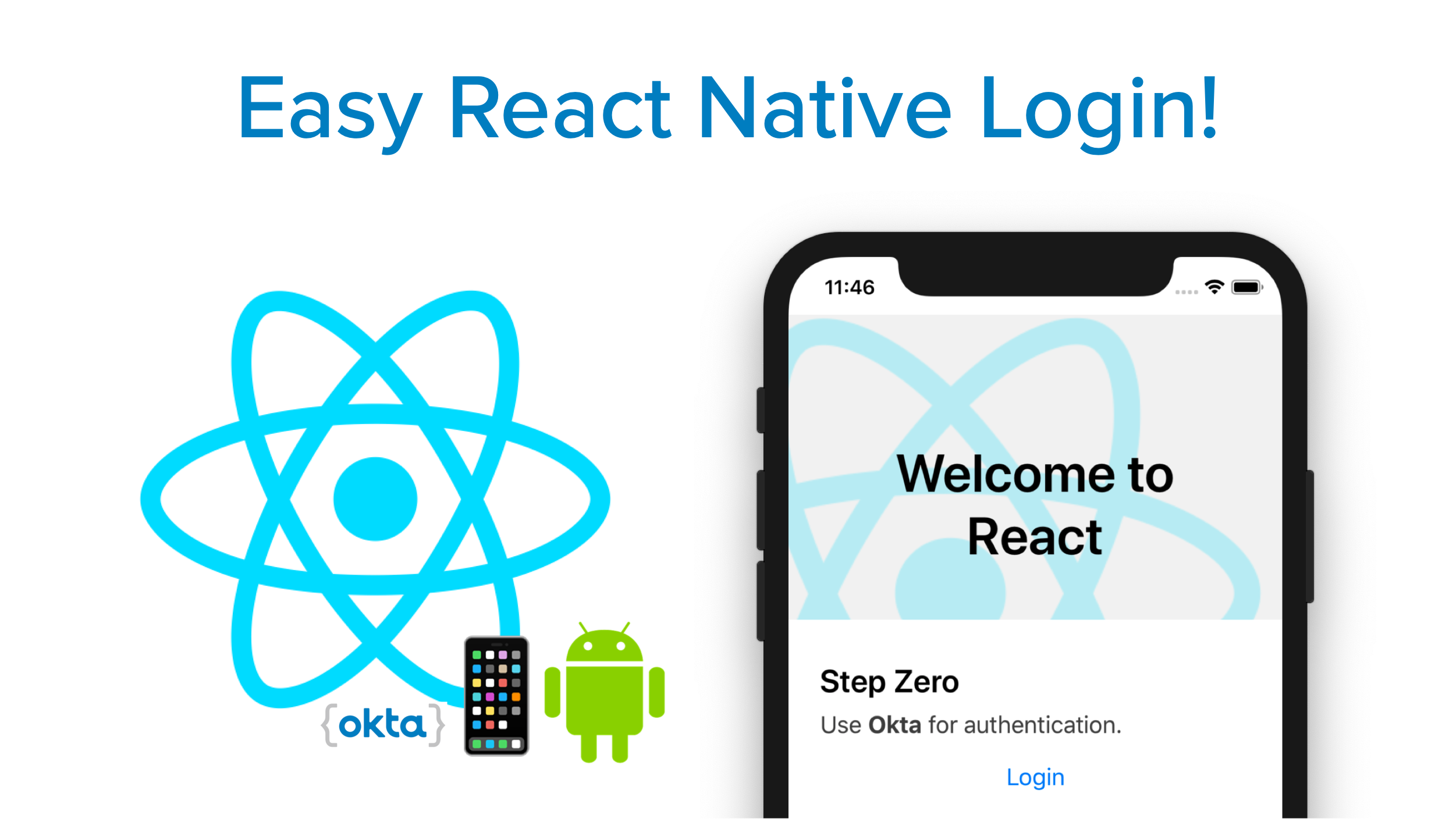
React Native is a mobile app development framework that allows you to use React to build native iOS and Android mobile apps. Instead of using a web view and rendering HTML and JavaScript, it converts React components to native platform components. This means you can use React Native in your existing Android and iOS projects, or you can create a whole new app from scratch. In this post, I’ll show you how to add a...
An Illustrated Guide to OAuth and OpenID Connect

In the “stone age” days of the Internet, sharing information between services was easy. You simply gave your username and password for one service to another so they could login to your account and grab whatever information they wanted! Yikes! You should never be required to share your username and password, your credentials, to another service. There’s no guarantee that an organization will keep your credentials safe, or guarantee their service won’t access more of...
Painless Node.js Authentication
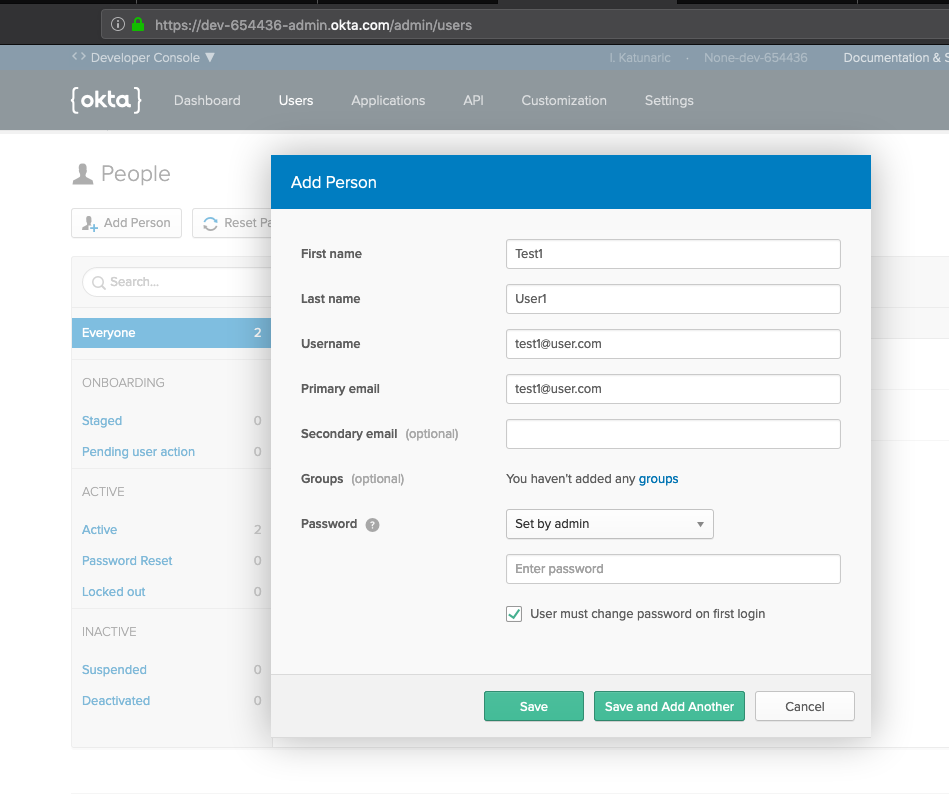
User authentication is a critical component of just about every web application. Unfortunately, while authentication is a core part of all websites, it can still be difficult to get right. Despite the Node.js community being around for a while, there still aren’t a lot of simple, foolproof ways to authenticate users in Node.js applications. In this article I’m going to explain how to build a Node.js application that authenticates users in a best practices way....
How to Develop a Quarkus App with Java and OIDC Authentication
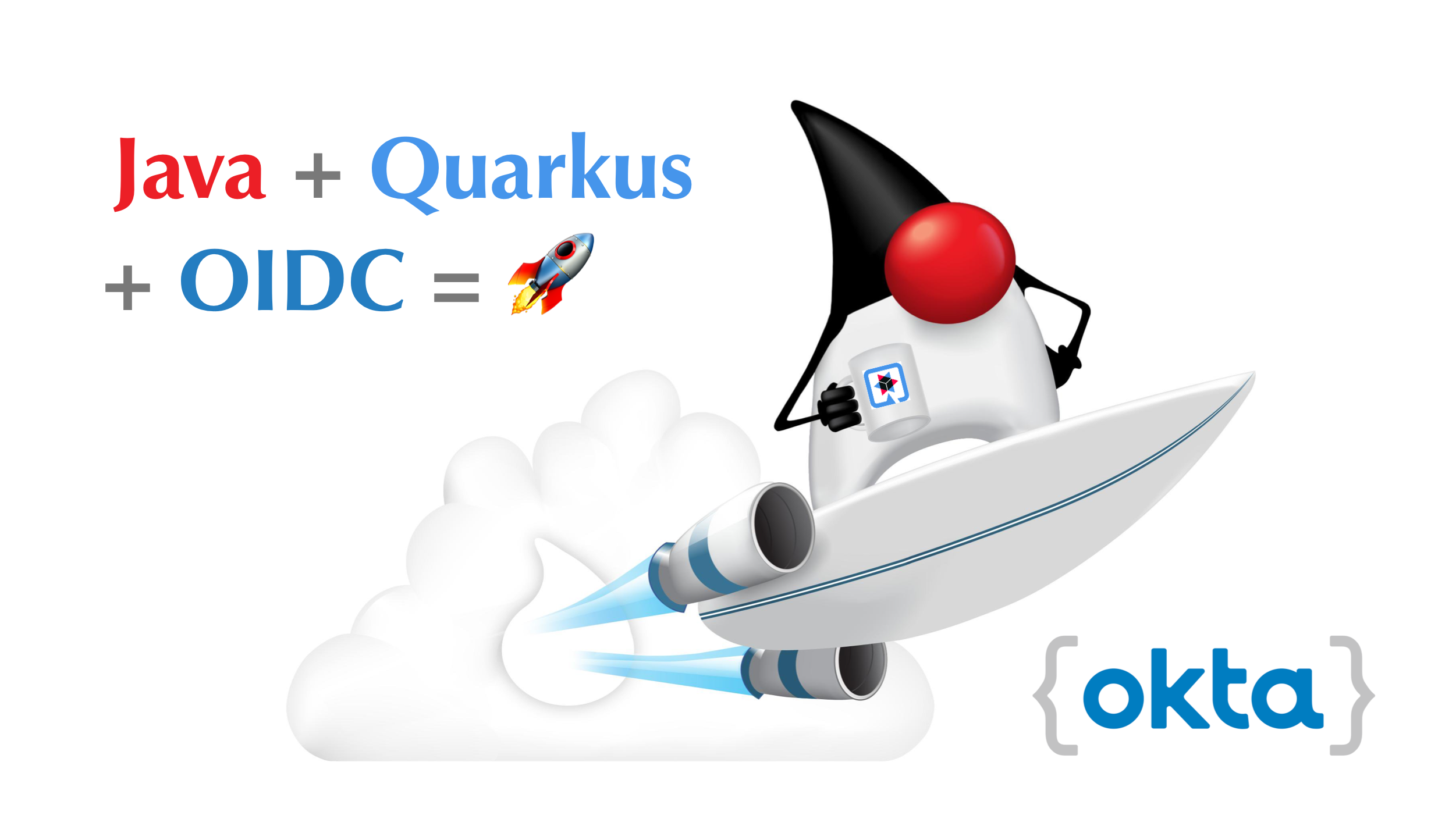
Quarkus is a container-first Kubernetes Java framework designed to have a super-fast start-up time and low memory usage. The container-first strategy emphasizes packaging the runtime environment along with the application code, allowing both to be tightly optimized and avoiding the endless updates and configuration problems that can come along with monolithic server systems. Quarkus was built from the beginning to support compilation to native code for use with Graal/SubstrateVM but also supports the good old...
Build a NodeJS App with TypeScript

As dynamically typed languages became prominent during the last decade, typeless (or should I say lawless?) programming became the norm for the backend as well as the frontend. Many people believe the simplicity of “just writing” code is efficient for providing a proof of concept or prototyping applications. However, as those applications grow, the typeless code used to build them often becomes incredibly convoluted and more difficult (some would say impossible) to manage. In the...
5 Minute Serverless Functions in Azure without an IDE

Microsoft Azure makes it incredibly easy to get a basic API/microservice up and running quickly! If you are unfamiliar with building serverless architecture in the Microsoft ecosystem, using Azure Functions has become a quick way to get back-end code up and running that is easy to understand and usable for anyone. In this tutorial, we will set-up an API endpoint using the HTTP Trigger invocation that you can use with any front-end site. I use...
Easy Spring Boot Deployment with AWS Elastic Beanstalk

Nearly all applications rely on authentication. Developers, and the companies that employ them, want to confirm who is making the request and are they who they say they are. And, this needs to happen fast enough for a good user experience. Fortunately, there are great tools to help. Spring Boot with Spring Security is a fantastic solution for Java-based web development. With relatively little code, developers can implement, test, update, and expand authentication schemes easily...
Monitor Your Java Apps with Spring Boot Actuator

Have you worked with Spring Boot Actuator yet? It’s an immensely helpful library that helps you monitor app health and interactions with the app - perfect for going to production! Spring Boot Actuator includes a built-in endpoint for tracing HTTP calls to your application - very useful for monitoring OpenID Connect (OIDC) requests - but unfortunately the default implementation does not trace body contents. In this post, I’ll show you how to extend the httptrace...
Build Mobile Apps with Angular, Ionic 4, and Spring Boot
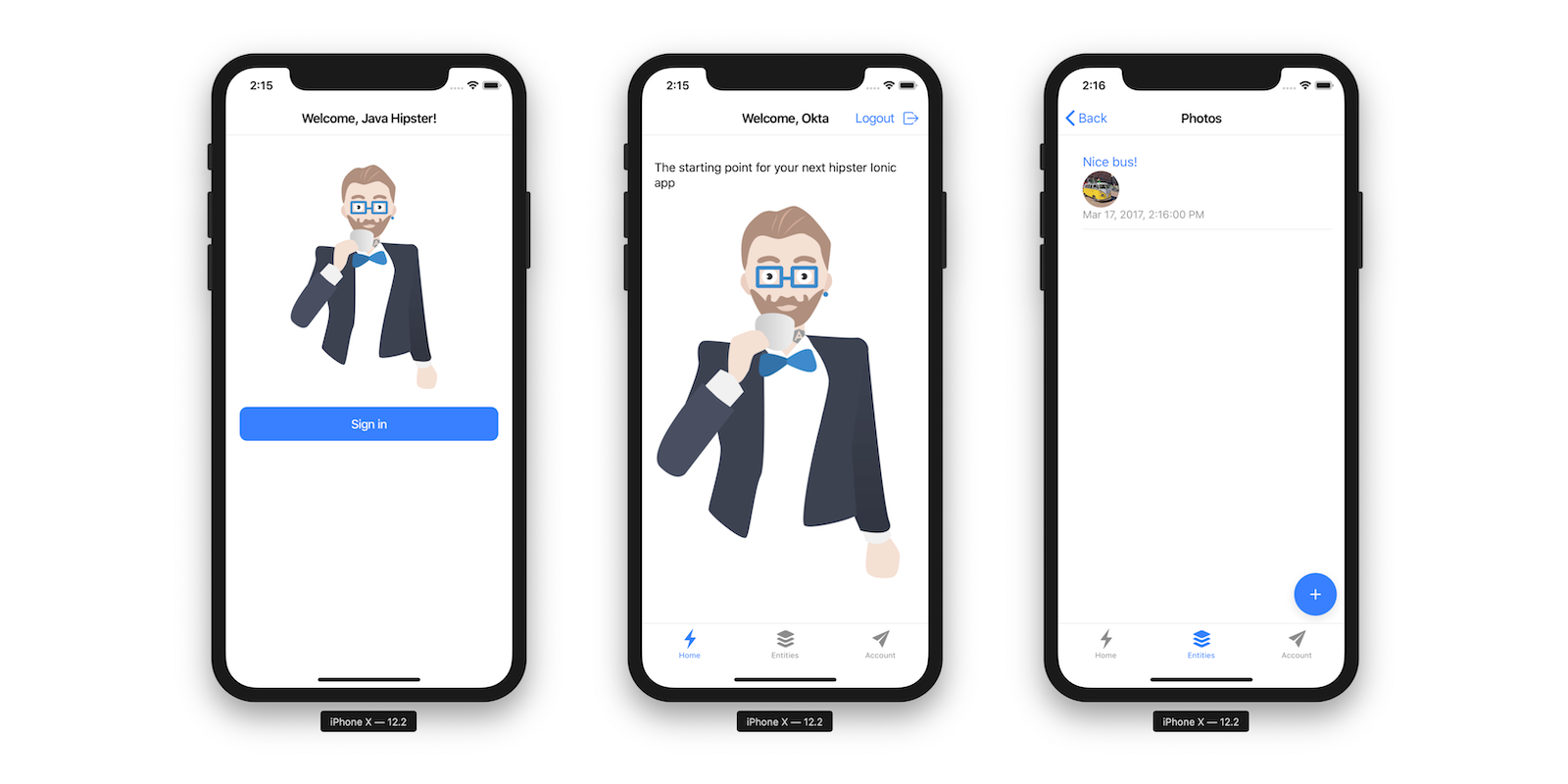
I’m a big fan of Ionic. I started using it several years ago when it was based on AngularJS. As a developer, I really liked it because I knew Angular. I found didn’t have to learn much more to be a productive developer with Ionic. What is Ionic? I’m glad you asked! Ionic is an open source project that allows you to build mobile apps using web tech. Technically, this is called a "hybrid" app...
Tutorial: User Login and Registration in Ionic 4
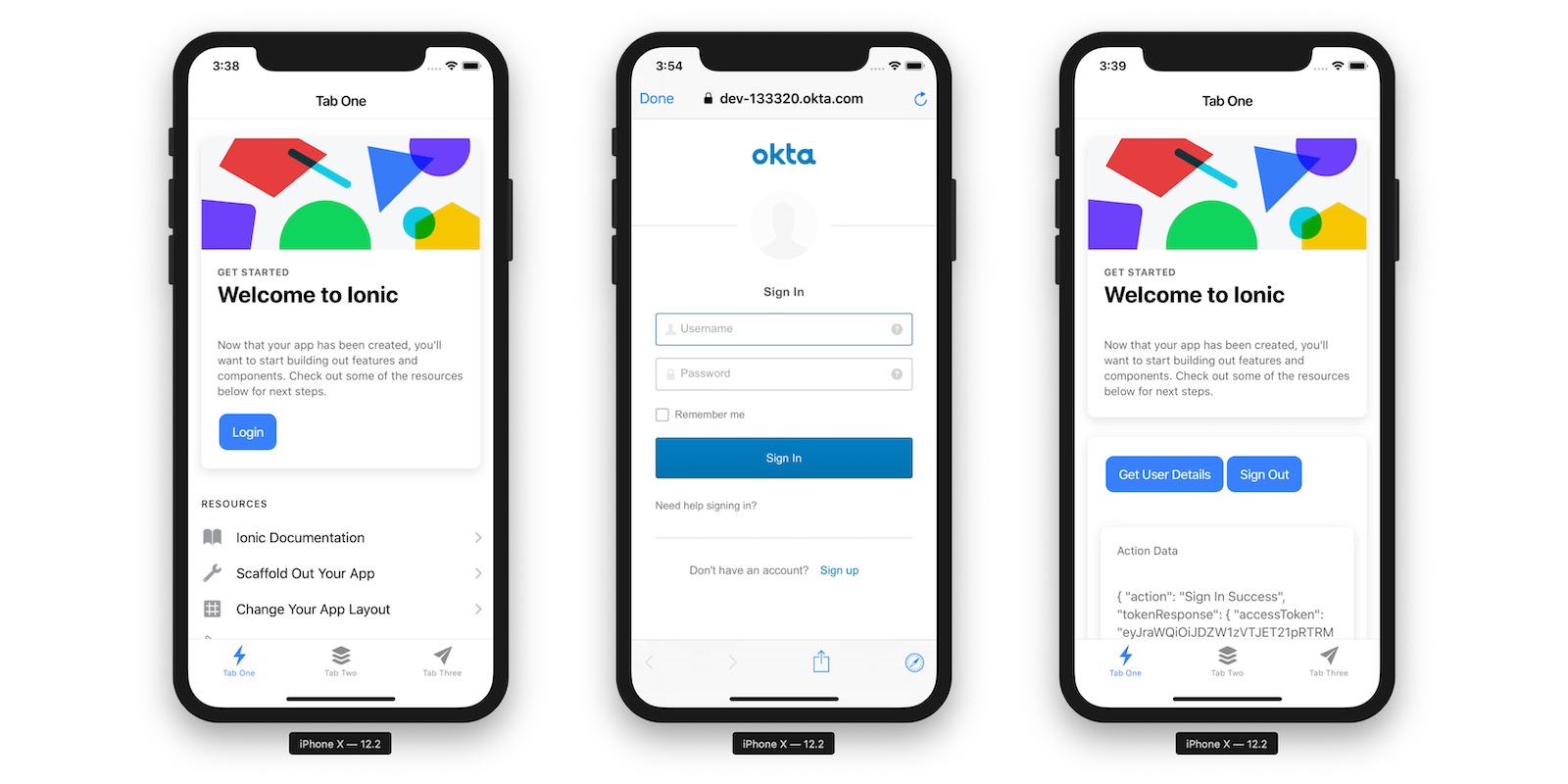
Ionic allows you to develop PWAs and hybrid mobile apps. PWAs are web applications that run in a browser and allow for offline capabilities via service workers. They can be installed on desktops and mobile devices, just like you install apps on your smartphone. Hybrid mobile apps are like native mobile apps, except they’re built using web technologies. Ionic 2 was based on AngularJS. Ionic 3 was based on Angular. Ionic 4 allows you to...
What the Heck is Sign In with Apple?

This week at Apple’s developer conference WWDC, Apple announced a new feature, “Sign In with Apple” enabling users to sign in to apps using their Apple ID. This new feature is positioned as a secure and privacy-friendly way for users to create an account in apps. Most iOS and Mac users already have an Apple ID, and this new feature lets them use that Apple ID to sign in to other apps and websites. If...
A Quick Guide to Spring Boot Login Options

In this post, you’re going to work through various options for implementing a login feature using Spring Boot 2.1. You’ll start with the most simple, basic auth, which you’d likely never want to use except for perhaps an internal backend tool, and move on to a simple form-based authentication page. Next, you’ll customize the default, auto-generated form by overriding some default templates and controllers. Finally, you’ll move on to adding Single Sign-on using OAuth 2.0....
Angular 8 + Spring Boot 2.2: Build a CRUD App Today!
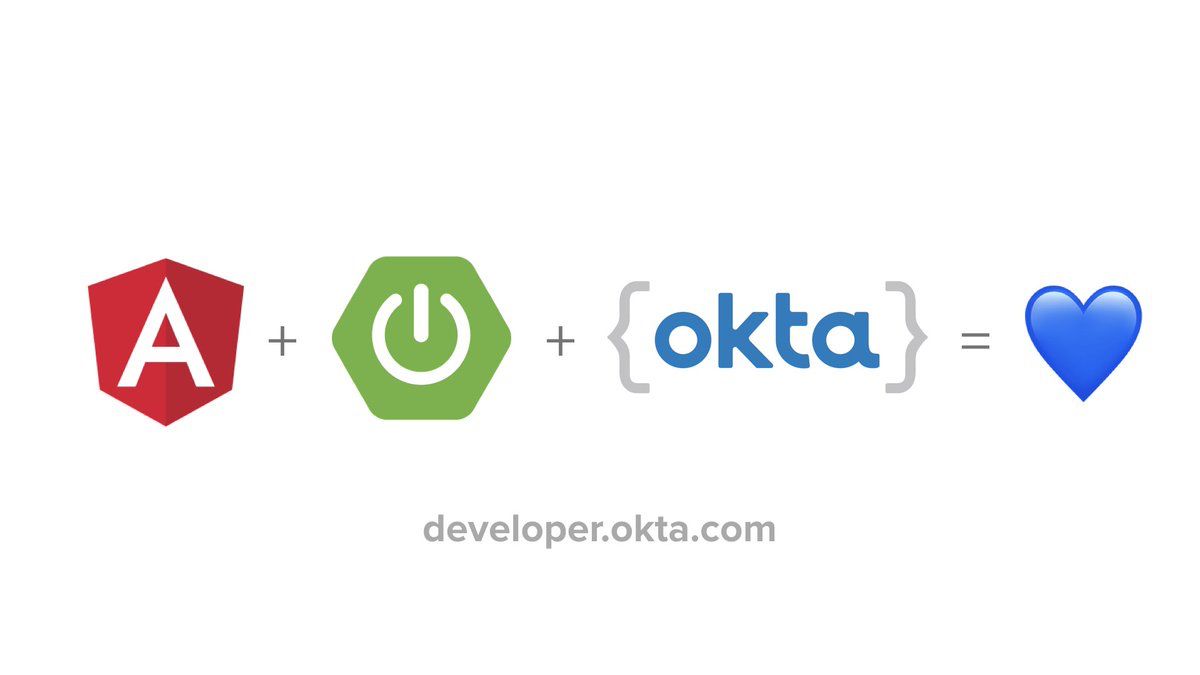
If you’ve been a Java developer for more than 15 years, you probably remember when there were a plethora of Java web frameworks. It started with Struts and WebWork. Then Tapestry, Wicket, and JSF came along and championed the idea of component-based frameworks. Spring MVC was released in 2004 (in the same month as Flex 1.0 and JSF 1.0) and became the de-facto standard in Java web frameworks over the next six years. Then along...
Easy Single Sign-On with Spring Boot and OAuth 2.0

Single sign-on used to be the “Holy Grail” of enterprise size companies and was usually only available companies that could afford it. Nowadays, we take SSO as a matter of course. For instance, you would think it was completely weird (and unpleasant) if you logged into GMail and then had to log in again when you went to Google Docs. But, what about building custom applications for developers? SSO was still in the domain of...
Migrate Your Spring Boot App to the Latest and Greatest Spring Security and OAuth 2.0

Spring Boot 1.5.x made it easier than ever before to integrate Spring Security with OAuth 2.0 into your application. Spring Boot 2.1.x dials it up to 11 by making OpenID Connect a first class citizen in the stack. In this post, you start with Spring Boot 1.5.19 and Spring Security 4.2.x. You integrate it with Okta’s OAuth service. From there, you move onto Spring Boot 2.1.3 and Spring Security 5.1. You’ll see how integrating with...
Devnexus 2019: Join the <dev/>olution

Hello, Developers! Have you ever been to the wonderful conference known as Devnexus? I attended for the first time two years ago and had a blast! It’s well organized, affordable, and has a diverse and fun crowd. This year, Okta is sponsoring Devnexus and we have a number of speakers sharing their wisdom. I thought it’d be fun to write a blog post that highlights my team members and what they’ll be talking about. If...
Nobody Cares About OAuth or OpenID Connect

If you’re reading this post, there’s a good chance that you’re a web developer who’s very interested in web security. You’ve probably heard about OAuth or OpenID Connect (OIDC) before. You may have even used them at some point in your career. But here’s the thing: almost nobody actually cares about OAuth or OIDC. Not you, not me, and not even other developers in the security industry. To understand why nobody cares about these two...
Angular 7: What's New and Noteworthy + OIDC Goodness

Angular 7 was released earlier this quarter and I’m pumped about a few of its features. If you’ve been following Angular since Angular 2, you know that upgrading can sometimes be a pain. There was no Angular 3, but upgrading to Angular 4 wasn’t too bad, aside from a bunch of changes in Angular’s testing infrastructure. Angular 4 to Angular 5 was painless, and 5 to 6 only required changes to classes that used RxJS....
Bootiful Development with Spring Boot and Vue

Vue is a web framework that’s gotten a lot of attention lately because it’s lean and mean. Its baseline framework cost is around 40K and is known as a minimalistic web framework. With all of the recent attention on web performance and mobile-first, mobile-fast, it’s no surprise that Vue has become more and more popular. If you spent the time to learn AngularJS back in the day, chances are you’ll find an old friend in...
Spring Boot 2.1: Outstanding OIDC, OAuth 2.0, and Reactive API Support

Spring Boot 2.1 was recently released, eight months after the huge launch of Spring Boot 2.0. The reason I’m most excited about Spring Boot 2.1 to me is its improved performance and OpenID Connect (OIDC) support from Spring Security 5.1. The combination of Spring Boot and Spring Security has provided excellent OAuth 2.0 support for years, and making OIDC a first-class citizen simplifies its configuration quite a bit. For those that aren’t aware, OIDC is...
Build a Web App with Spring Boot and Spring Security in 15 Minutes

Developers know that securing web apps can be a pain. Doing it right is tough. The worst part is that “right” is a moving target. Security protocols change. Vulnerabilities are found in dependencies and patches are released. Tons of often complex boilerplate code has to be generated. The software-as-service paradigm has proliferated over the last decade, and while I love reinventing the wheel as much as the next developer (because, clearly, I’m gonna write it...
Full Stack Reactive with Spring WebFlux, WebSockets, and React

Spring WebFlux can be used to create a REST API with streaming data. Spring WebFlux can also be integrated with WebSockets to provide notifications that clients can listen to. Combining the two is a powerful way to provide real-time data streaming to JavaScript or mobile clients. Add React to the mix and you have an excellent foundation for a full-stack reactive architecture. React is a UI toolkit (similar to GWT) that lets you build components...
Build Reactive APIs with Spring WebFlux
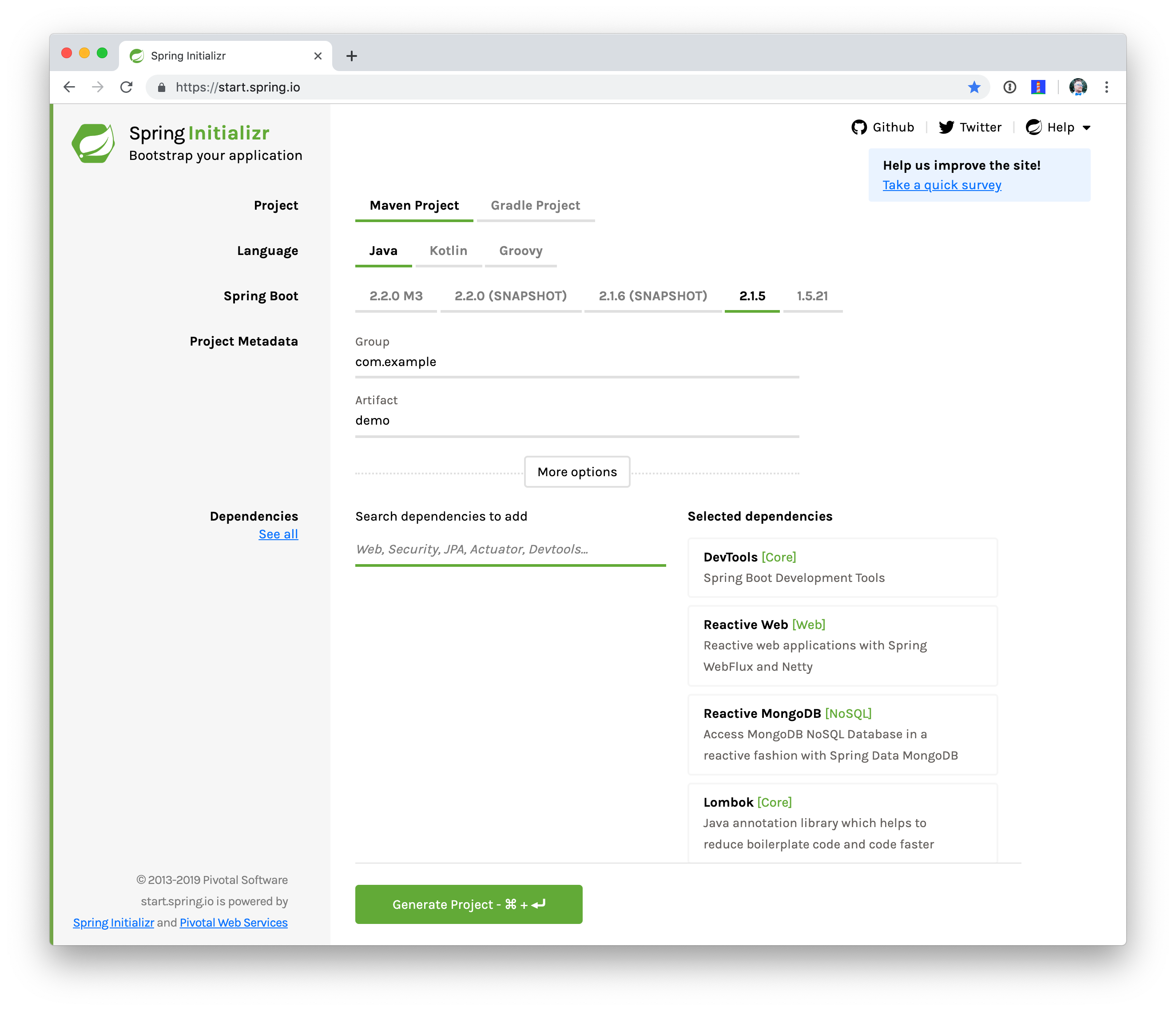
Spring Boot 2.0 was a long-awaited release from the good folks at Pivotal. One of its new features is reactive web programming support with Spring WebFlux. Spring WebFlux is a web framework that’s built on top of Project Reactor, to give you asynchronous I/O, and allow your application to perform better. If you’re familiar with Spring MVC and building REST APIs, you’ll enjoy Spring WebFlux. There’s just a few basic concepts that are different. Once...
Build a Desktop App with Electron and Authentication
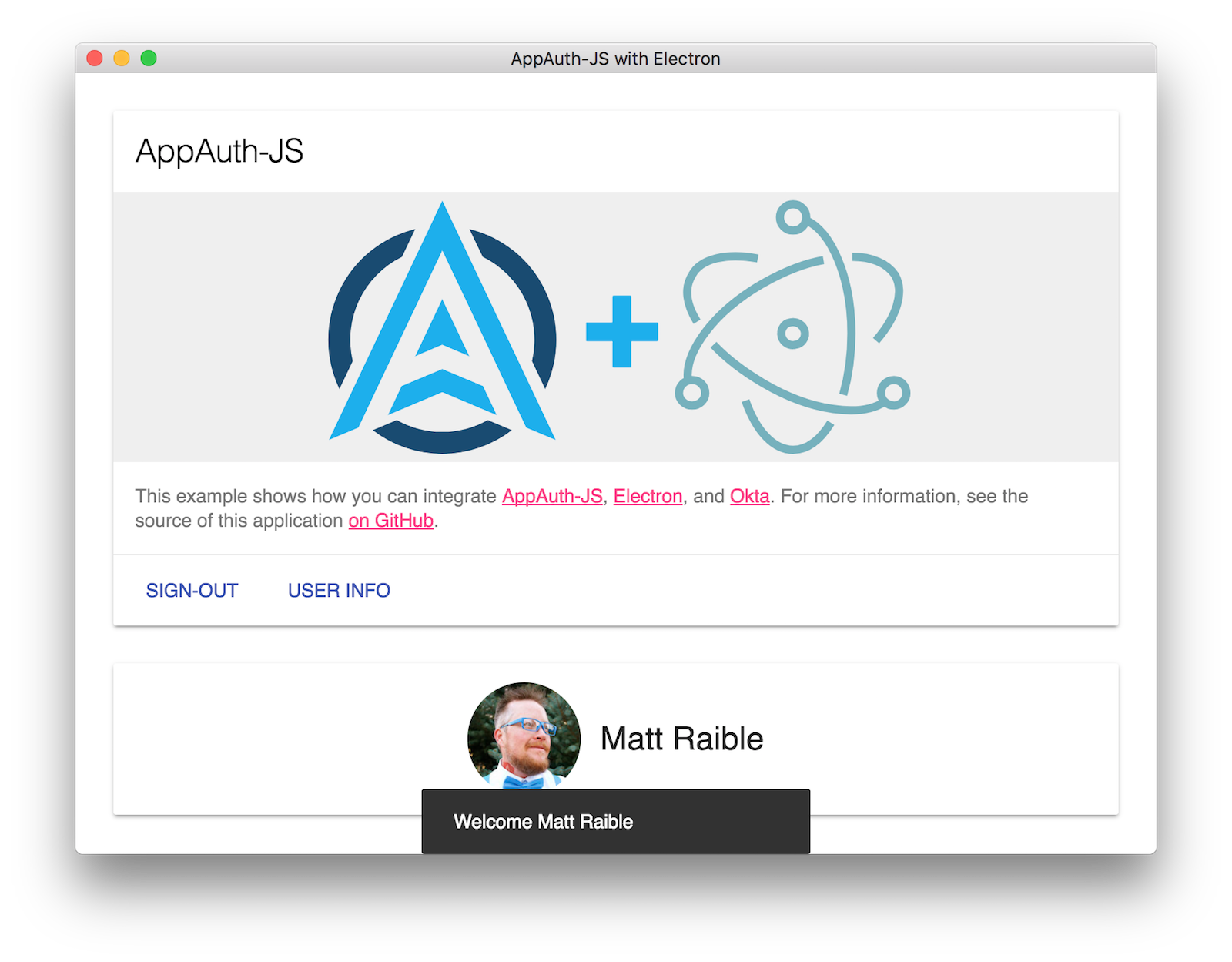
Electron is a framework for building cross-platform desktop applications with web technologies like JavaScript, HTML, and CSS. It was created for GitHub’s Atom editor and has achieved widespread adoption since. Electron powers several apps that I use on a daily basis: Slack, Kitematic, and Visual Studio Code to name a few. Electron 2.0 was released in early May 2018, along with changes to the project to adhere to strict semantic versioning. This is good news...
Build a Java REST API with Java EE and OIDC
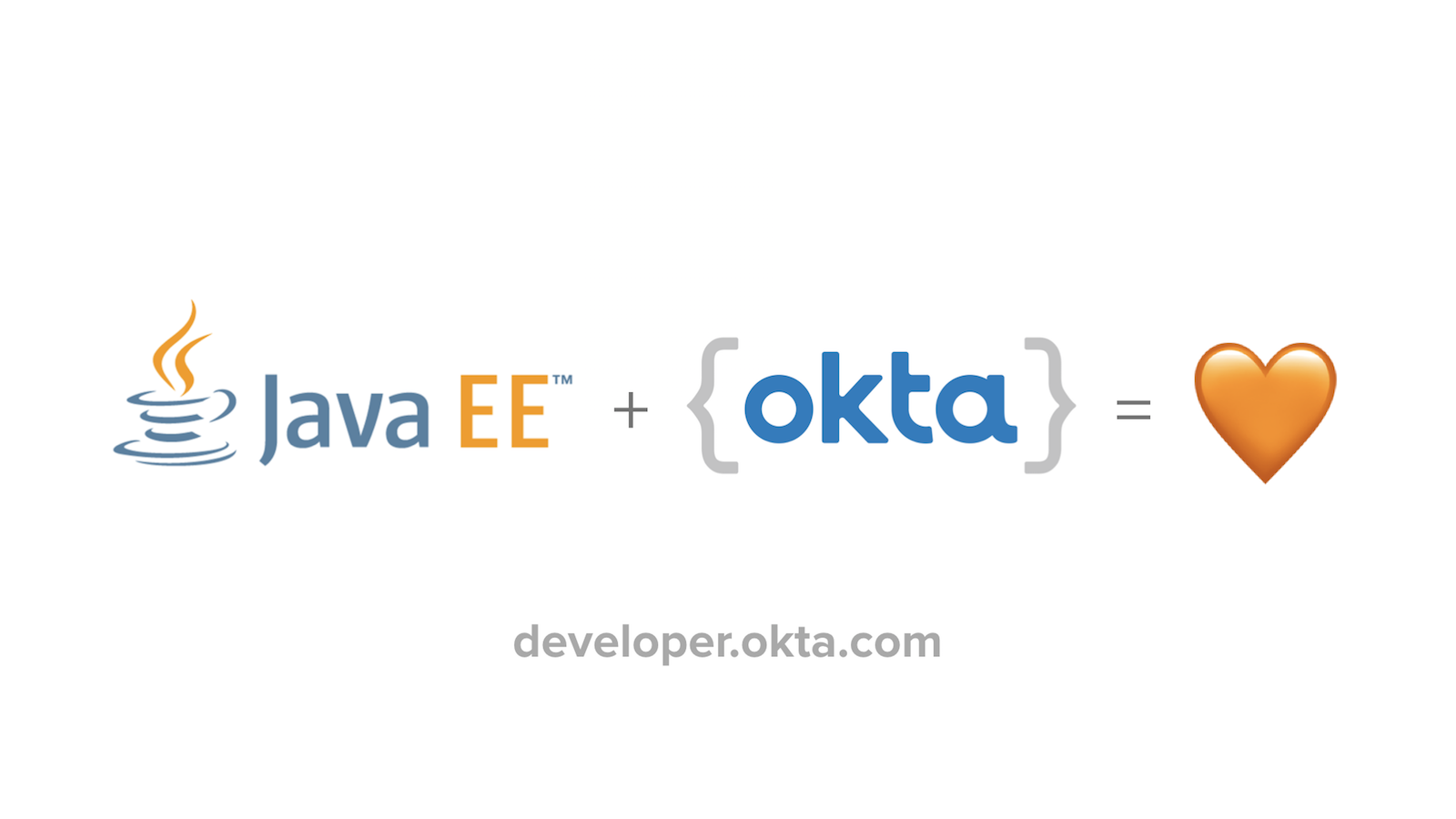
Java EE allows you to build Java REST APIs quickly and easily with JAX-RS and JPA. Java EE is an umbrella standards specification that describes a number of Java technologies, including EJB, JPA, JAX-RS, and many others. It was originally designed to allow portability between Java application servers, and flourished in the early 2000s. Back then, application servers were all the rage and provided by many well-known companies such as IBM, BEA, and Sun. JBoss...
Build a Basic CRUD App in Android with Kotlin
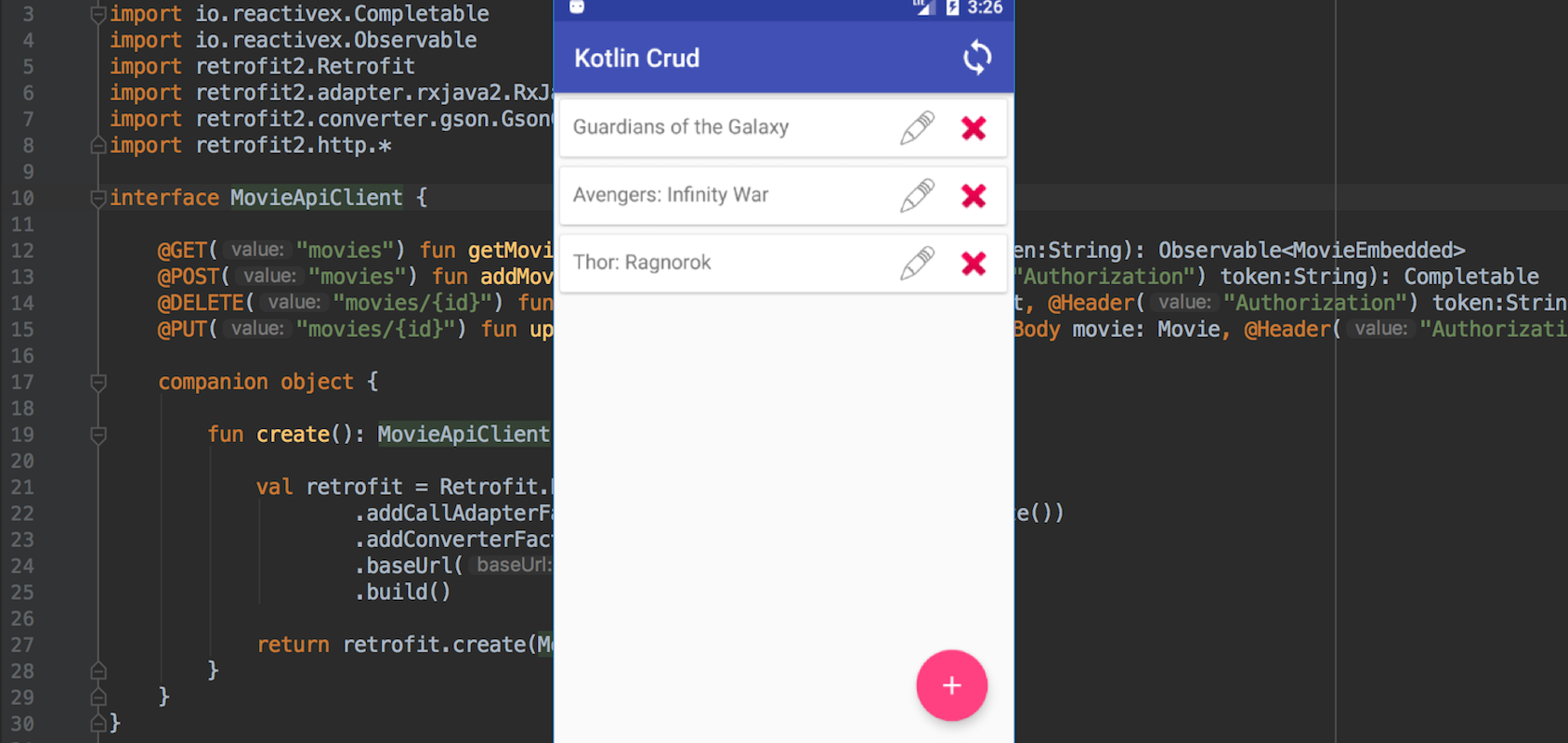
Kotlin was recently given official Android support status by Google, but it remains difficult to understand for many developers. The best way to start is by creating a complete app yourself, which you’ll do in this tutorial. In this tutorial, you’ll use Spring Boot for the API that powers your Android (+ Kotlin) mobile app. Spring Boot is a great way to create a robust REST API with a minimal amount of code. I’m going...
Build a Basic CRUD App with Angular 7.0 and Spring Boot 2.1
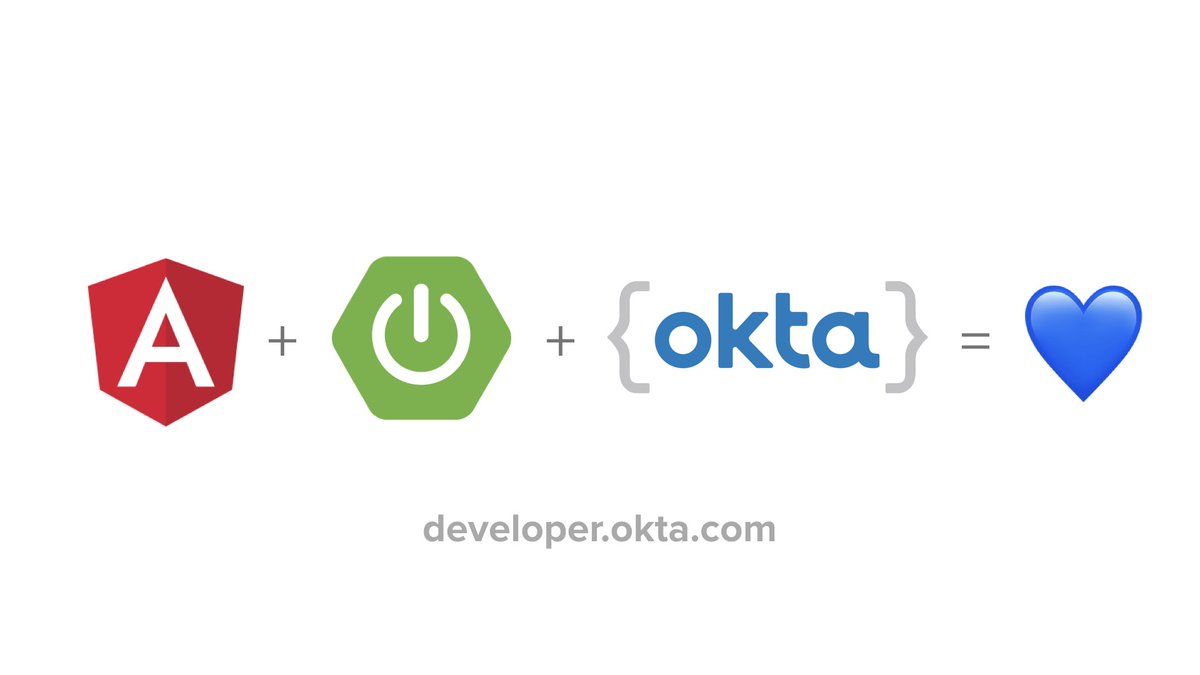
Technology moves fast these days. It can be challenging to keep up with the latest trends as well as new releases of your favorite projects. I’m here to help! Spring Boot and Angular are two of my favorite projects, so I figured I’d write y’all a guide to show you how to build and secure a basic app using their latest and greatest releases. In Spring Boot, the most significant change in 2.0 is its...
Add Social Login to Your Spring Boot 2.0 App
We’ve all seen social login. It’s the “Log in with Facebook” or “Log in with Twitter” buttons we see below every username and password field on the Internet. But why do these exist? The primary benefits of social login are ease of use and security. It’s easier for your users to log into your app if they can use credentials they’ve already created on a a service they trust. They don’t have to come up...
Build a Simple CRUD App with Flask and Python
Today I’m going to walk you through building a simple Flask web app (a blog) complete with user management (login, registration, etc.), database models, and everything else that goes along with it. In this post I’ll walk you through the code piece-by-piece, explaining everything you need to know along the way. By the end of this tutorial, you’ll know how to build simple Flask web apps and have a good understanding of how to create...
Use React and Spring Boot to Build a Simple CRUD App
Flask Tutorial: Simple User Registration and Login
Flask is my favorite Python web framework. It’s minimal, it’s fast, and most of all: it’s fun. I love almost everything about Flask development, with one exception: user management. User management in Flask, just like in many other web frameworks, is difficult. I can’t tell you how many times I’ve created user databases, set up groups and roles, integrated social login providers, handled password reset workflows, configured multi-factor authentication workflows, etc. Even awesome libraries like...
Tutorial: Build a Basic CRUD App with Node.js

Node.js is eating the world. Many of the largest companies are building more and more of their websites and API services with Node.js, and there’s no sign of a slowdown. I’ve been working with Node.js since 2012 and have been excited to see the community and tooling grow and evolve — there’s no better time to get started with Node.js development than right now. This tutorial will take you step-by-step through building a fully-functional Node.js...
Build a Photo Gallery PWA with React, Spring Boot, and JHipster

At its core, React is just a UI toolkit, ala GWT, but it has a very healthy ecosystem around it that provides everything you need to build a kick-ass progressive web app (PWA). PWAs are cool because if they’re done right, they can offer a native-like experience for your users, allowing them to install your app, and use it when it’s offline. But, “why React?” is what you’re probably asking yourself right now, right? Well,...
Secure Your Spring Boot Application with Multi-Factor Authentication
OAuth 2.0 has quickly become an industry standard for third party authentication for web applications. It’s a super secure strategy, when implemented properly, but getting it right can be hard. Fortunately, you don’t have to go it alone. Okta has done it for you. This is one place where it’s definitely not worth re-inventing the wheel. And further, with all of the cybersecurity attacks today, just using a password, even a hard password, is not...
Build a Basic CRUD Application with Grails and Okta
Grails and Groovy can be a great alternative to Spring Boot, in some specific use cases. In this post, we’ll start with that basic Grails app that already has secure authentication via Okta, and add some additional features. In this tutorial you will: Define a simple data model Create domain classes for the models Create the necessary controllers and views Configure logging Configure the database so that the data is persisted between sessions Add some...
Build Secure Node Authentication with Passport.js and OpenID Connect
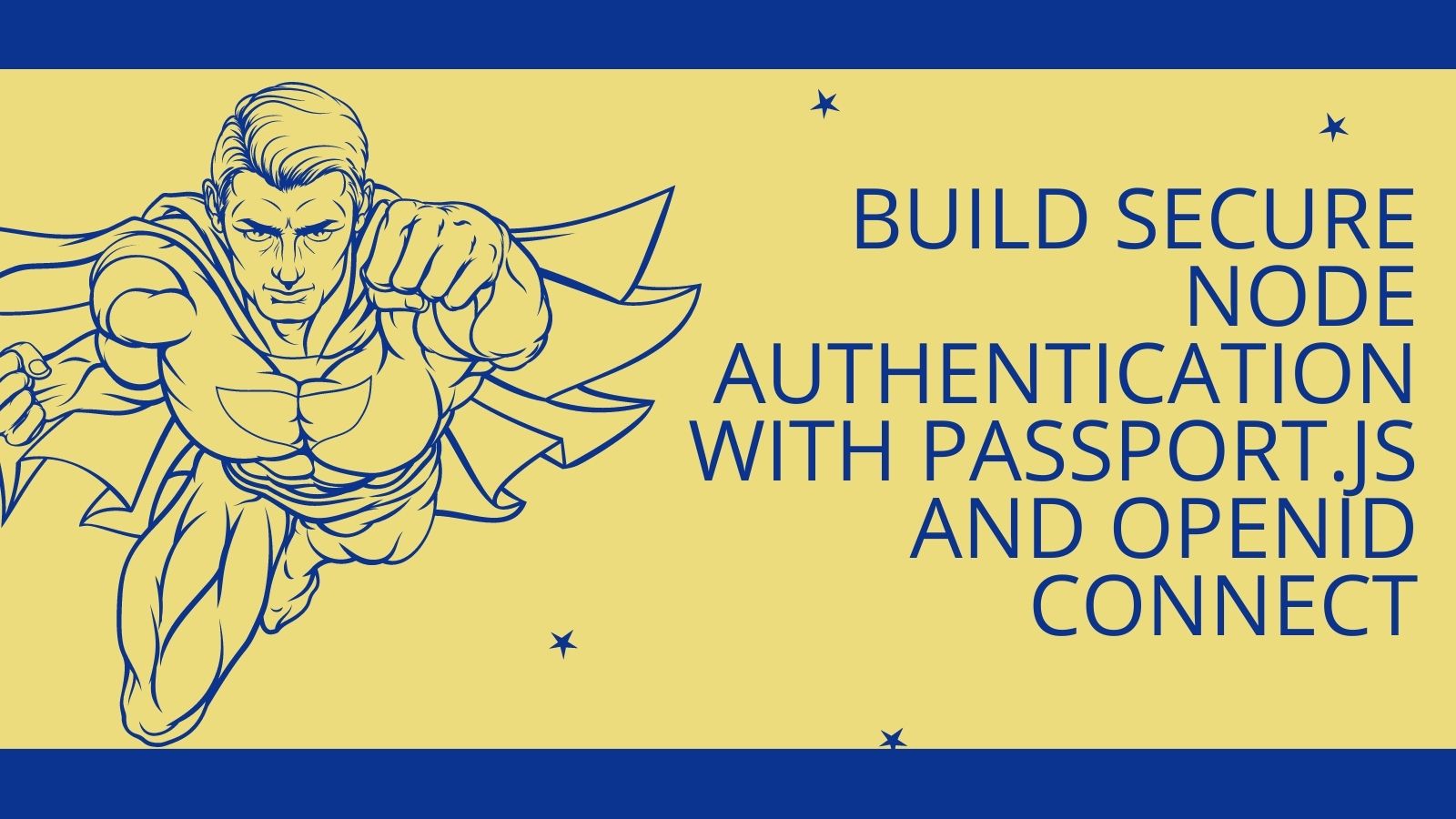
Building local or social login in Node can be simple with Passport.js. There are over 500 strategies already built that make it easy to wire up identity providers. But what do you do if your identity provider doesn’t already have a pre-built strategy? Do you have to build all that stuff yourself? Absolutely not! You can use generic strategies for Passport.js that make it easy to use your provider of choice without writing all the...
Build Server Side Authentication in Grails with OAuth 2.0 and Okta
What is Grails, what is Groovy, and why would we choose them over Spring Boot? In this post I’ll walk you through implementing server-side authentication in Grails using OAuth 2.0 and Okta. Before we dive in, however, I want to talk a little bit about why you’d be using Grails + Groovy in the first place, and how it can make your life easier in specific situations. Grails is an open source “convention over configuration”...
Use OpenID Connect for Authorization in Your ASP.NET MVC Framework 4.x App
A common practice in web applications is to have a restricted area for registered users, and perhaps another for administrators. Whether this restricted access area is premium content, or simply the order history for your e-commerce site’s users, it’s important that it be properly secured. OpenID Connect (OIDC) makes it easy, but it can be tricky to set up in ASP.NET MVC framework. In this post, I’ll show you how to create groups and use...
Token Authentication in ASP.NET Core 2.0 - A Complete Guide

Token authentication has been a popular topic for the past few years, especially as mobile and JavaScript apps have continued to gain mindshare. Widespread adoption of token-based standards like OAuth 2.0 and OpenID Connect have introduced even more developers to tokens, but the best practices aren’t always clear. I spend a lot of time in the ASP.NET Core world and have been working with the framework since the pre-1.0 days. ASP.NET Core 2.0 has great...
Build a React Native Application and Authenticate with OAuth 2.0
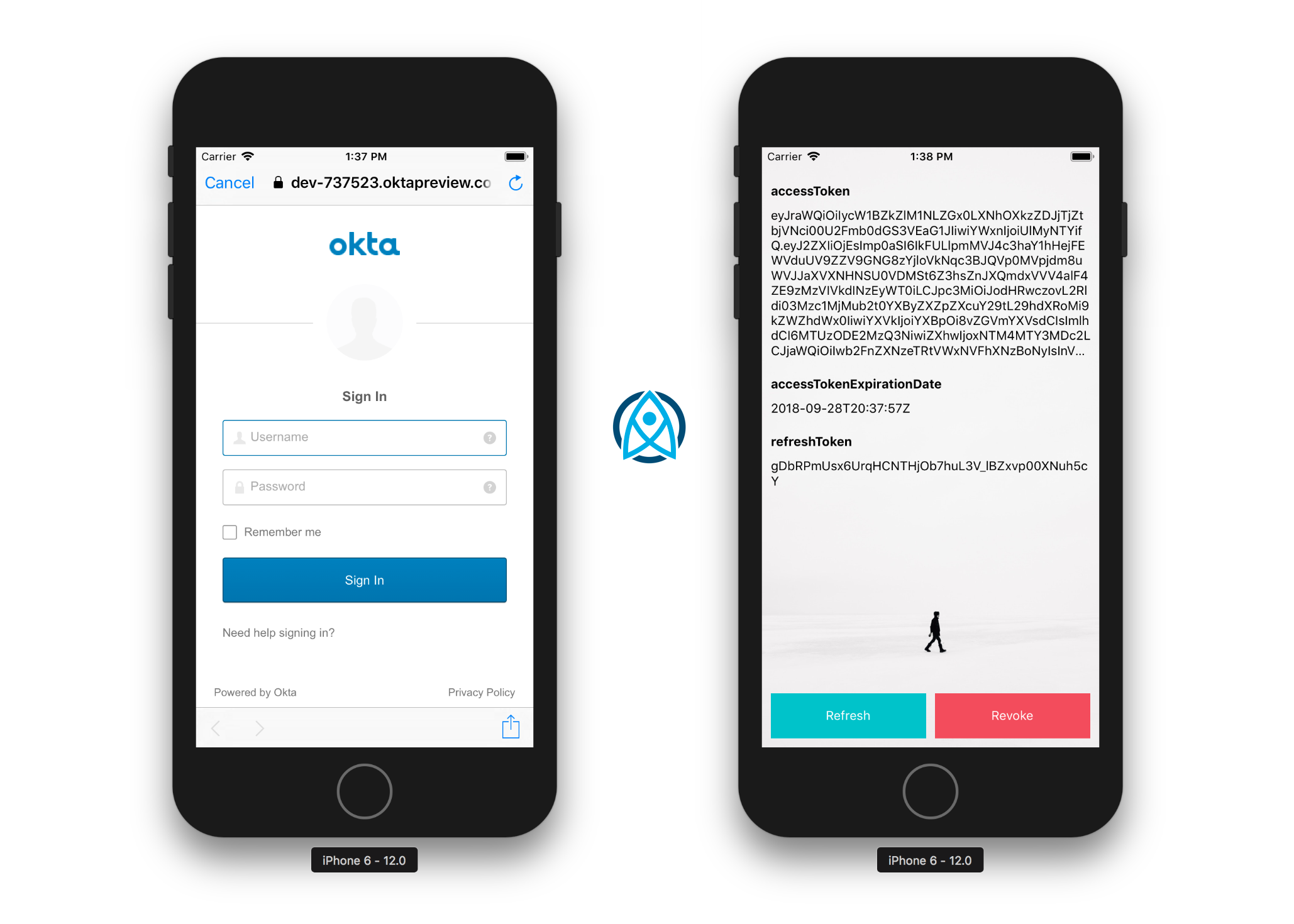
With Okta and OpenID Connect (OIDC) you can easily integrate authentication into a React Native application and never have to build it yourself again. OIDC allows you to authenticate directly against the Okta API, and this article shows you how to do just that in a React Native application. Today you’ll see how to log a user into your React Native application using an OIDC redirect via the AppAuth library. React Native is a pretty...
Develop a Microservices Architecture with OAuth 2.0 and JHipster
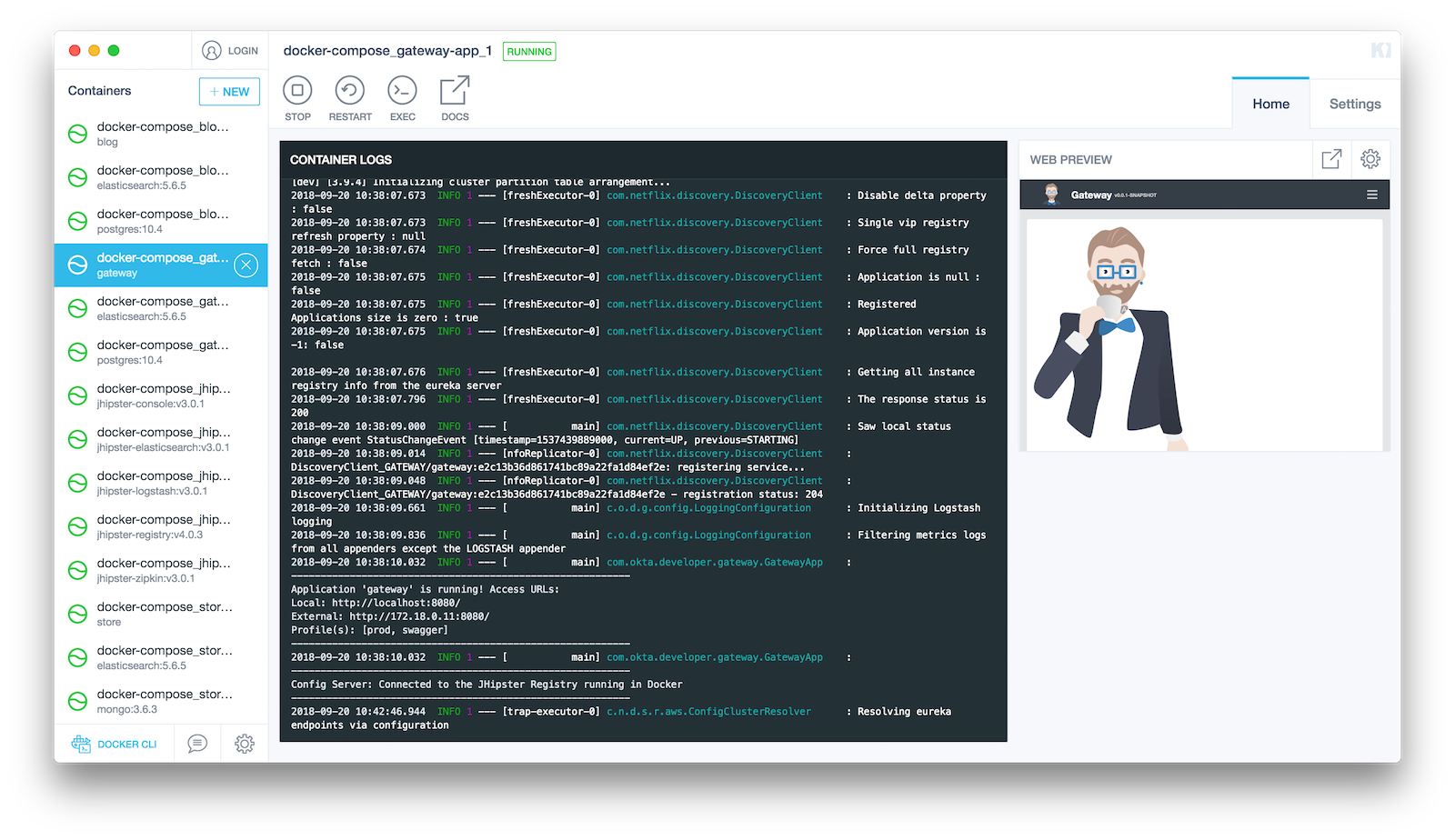
JHipster is a development platform to generate, develop, and deploy Spring Boot + Angular web applications and Spring microservices. It supports using many types of authentication: JWT, session-based, and OAuth 2.0. In its 5.0 release, it added React as a UI option. In addition to having two popular UI frameworks, JHipster also has modules that support generating mobile applications. If you like Ionic, which currently leverages Angular, you can use Ionic for JHipster. If you’re...
Build a Basic CRUD App with Vue.js and Node

I’ve danced the JavaScript framework shuffle for years starting with jQuery, then on to Angular. After being frustrated with Angular’s complexity, I found React and thought I was in the clear. What seemed simple on the surface ended up being a frustrating mess. Then I found Vue.js. It just felt right. It worked as expected. It was fast. The documentation was incredible. Templating was eloquent. There was a unanimous consensus around how to handle state...
Build User Registration with Node, React, and Okta
Today’s internet users expect a personalized experience. Developers must learn to develop websites that provide that personalized experience while keeping their user’s information private. Modern web applications also tend to have a server-side API and a client-side user interface. it can be challenging to get make both ends aware of the currently logged in user. In this tutorial, I will walk you through setting up a Node API that feeds a React UI, and build...
Build a Secure To-Do App with Vue, ASP.NET Core, and Okta
I love lists. I keep everything I need to do (too many things, usually) in a big to-do list, and the list helps keep me sane throughout the day. It’s like having a second brain! There are hundreds of to-do apps out there, but today I’ll show you how to build your own from scratch. Why? It’s the perfect exercise for learning a new language or framework! A to-do app is more complex than “Hello...
Use Ionic for JHipster to Create Mobile Apps with OIDC Authentication
We 💙 Ionic, JHipster, and Java here at Okta. Ionic is a framework for building native mobile apps using web technologies. Technically, this is called a “hybrid” app because it’s not using native SDKs. Hybrid mobile apps are distributed just like native apps: they can be installed on mobile devices, and they’re listed in app stores. As an end user, there’s a good chance you can’t tell the difference between a hybrid mobile app and...
Protect Your Cryptocurrency Wealth Tracking PWA with Okta
Cryptocurrencies are all the rage. Over the last year, the value of Bitcoin alone has risen 1,603%, driving more and more people to wonder if they’re missing out on the “next big thing.” Because of the massive influx of money into cryptocurrencies like Bitcoin, Ethereum, Monero, and Ripple — blockchain technology (which is the foundation of all cryptocurrency) has become an area of intense technical study. At its core, blockchain technology does nothing more than...
Get Started with Spring Security 5.0 and OIDC
Spring Security is a powerful and highly customizable authentication and access-control framework. It is the de-facto standard for securing Spring-based applications. I first encountered Spring Security when it was called Acegi Security in 2005. I had implemented standard Java EE in my open source project, AppFuse. Acegi Security offered a lot more, including remember me and password encryption as standard features. I had managed to get “remember me” working with Java EE, but it wasn’t...
Bootiful Development with Spring Boot and React
React has been getting a lot of positive press in the last couple years, making it an appealing frontend option for Java developers! Once you learn how it works, it makes a lot of sense and can be fun to develop with. Not only that, but it’s wicked fast! If you’ve been following me, or if you’ve read this blog for a bit, you might remember my Bootiful Development with Spring Boot and Angular tutorial....
Build a Basic CRUD App with Angular 5.0 and Spring Boot 2.0

Technology moves fast these days. It can be challenging to keep up with the latest trends as well as new releases of your favorite projects. I’m here to help! Spring Boot and Angular are two of my favorite projects, so I figured I’d write y’all a guide to show you how to build and secure a basic app using their latest and greatest releases. In Spring Boot, the most significant change in 2.0 is its...
Build an iOS App with Secure Authentication in 20 Minutes
What does it take to build a successful mobile application in today’s ever-changing market? There are (what seems like an infinite) number of design, build, and test cycles performed, just to release your app into the hands of a user. In essence: while Users.love != true { Product.design() Product.rebuild() } Once completed, the real challenge begins – retaining those users. Mostly that means getting users to log in to your app easily, and then never...
Add Authentication to Play Framework with OIDC and Okta
I’ve fallen in love with Play Framework in the past, but then found a more attractive framework in Spring Boot. I fell in love partly because Play was new and sexy at the time, but also because it’s “live reloading” of Java code was a killer feature I’d been looking for. When it added support for Scala in v2.0, I was very excited to learn Scala and discover the power of functional programming. Part of...
Play Zork, Learn OAuth
In the early ’80s, some of the best “video” games were text-based adventures. These games would print out descriptive text of your surroundings and you would interact with the game using simple, but natural language commands like: “go north” or “take sword”. Fast forward some 30 years and a specification for an authorization framework called OAuth 2.0 was published. This framework allows an application to receive a token from an external party (like Okta) that...
Use OpenID Connect Support with JHipster
Single sign-on (SSO) is a feature that most developers don’t care about when building one-off applications for clients or themselves. However, when developing apps for their company, which will be used by employees of their business, they often need to hook into an existing identity provider. It might be Active Directory (AD), LDAP, or a myriad of other systems. Okta provides SSO for many companies around the world and allows them to configure AD and...
Use OpenID Connect to Build a Simple Node.js Website

If you’ve ever spent time trying to figure out the best way to handle user authentication for your Node app and been confused: you’re not alone. Over the last few years, authentication practices have changed quite a bit. Today I’m going to show you how to use OpenID Connect to build an extremely simple Node.js website (using Express.js) that allows you to manage your users, log them in, and log them out. Websites used to...
Add Role-Based Access Control to Your App with Spring Security and Thymeleaf
User management functions are required by a wide variety of apps and APIs, and it’s a common use-case to partition access to parts of an application according to roles assigned to a user. This is the basis of role-based access control (RBAC). Okta manages these roles with groups. Users can belong to one or more groups. With the Okta Spring Security integration, these groups are automatically mapped to roles that can be called out in...
The Lazy Developer's Guide to Authentication with Vue.js

I’ll happily admit that like many of you, I’m a lazy developer. I tend to look for solutions someone else has already built before I try to build them myself. In the “old days” of the early 2000s, I used to spend a lot more time coding solutions myself. But today many solutions to coding problems are just a keyword search away. In that spirit, I approached this tutorial using keywords – looking for existing...
Build an Ionic App with User Authentication
With Okta and OpenID Connect (OIDC) you can easily integrate authentication into an Ionic application, and never have to build it yourself again. OIDC allows you to authenticate directly against the Okta API, and this article shows you how to do just that in an Ionic application. I’ll demo how to log in with OIDC redirect, using Okta’s Auth SDK as well as how to use OAuth with Cordova’s in-app browser; user registration is omitted...
What's in a Token? – An OpenID Connect Primer, Part 3 of 3
In the previous two installments of this OpenID Connect (OIDC) series, we dug deep into the OIDC flow types and saw OIDC in action using a playground found at: https://okta-oidc-fun.herokuapp.com/. In this third and final installment, we’ll look at what’s encoded into the various types of tokens and how to control what gets put in them. JWTs, have the benefit of being able to carry information in them. With this information available to your app...
OIDC in Action – An OpenID Connect Primer, Part 2 of 3
In the first installment of this OpenID Connect (OIDC) series, we looked at some OIDC basics, its history, and the various flow types, scopes, and tokens involved. In this post, we’ll dive into the mechanics of OIDC and see the various flows in action. The token(s) you get back from an OIDC flow and the contents of the /userinfo endpoint are a function of the flow type and scopes requested. You can see this live...
Identity, Claims, & Tokens – An OpenID Connect Primer, Part 1 of 3
In the beginning, there were proprietary approaches to working with external identity providers for authentication and authorization. Then came SAML (Security Assertion Markup Language) – an open standard using XML as its message exchange type. Then, there was OAuth and OAuth 2.0 – also open as well as being a modern, RESTful approach to authorization using JSON as its medium. And now, the holy grail of “secure delegated access” OpenID Connect (henceforth OIDC), which runs...
OpenID Connect for User Authentication in ASP.NET Core
In the age of the “personalized web experience”, authentication and user management is a given, and it’s easier than ever to tap into third-party authentication providers like Facebook, Twitter, and Google. And it’s not just the wild, wild web that needs it. Businesses need ways to secure their APIs, and identify users logged into their apps. OpenID Connect is a protocol for authenticating users. It is a specification by the OpenID Foundation describing the best...
What the Heck is OAuth?
There’s a lot of confusion around what OAuth actually is. Some people think OAuth is a login flow (like when you sign into an application with Google Login), and some people think of OAuth as a “security thing”, and don’t really know much more than that. I’m going to show you what OAuth is, explain how it works, and hopefully leave you with a sense of how and where OAuth can benefit your application. What...
Add Authentication to Your Angular PWA
You’re developing a Progressive Web Application (PWA), and your service worker and web app manifest are working swimmingly. You’ve even taken the time to deploy it to a server with HTTPS, and you’re feeling pretty good about things. But wait, you don’t have any way of knowing who your users are! Don’t you want to provide them with an opportunity to authenticate and tell you who they are? Once you know who they are, you...
Angular Authentication with OpenID Connect and Okta in 20 Minutes
Angular (formerly called Angular 2.0) is quickly becoming one of the most powerful ways to build a modern single-page app. A core strength is Angular’s focus on building reusable components, which help you decouple the various concerns in your application. Take authentication, for example: it can be painful to build, but once you wrap it in a component, the authentication logic can be reused throughout your application. The Angular CLI makes it easy to scaffold...
Demystifying OAuth
It seems that OAuth 2.0 is everywhere these days. Whether you are building a hot new single page web application (SPA), a native mobile experience, or just trying to integrate with the API economy, you can’t go far without running into the popular authorization framework for REST/APIs and social authentication. During Oktane15, Karl McGuinness, our Senior Director of Identity, demystified the powerful, yet often misunderstood, world of OAuth 2.0 and shared details on Okta’s growing...